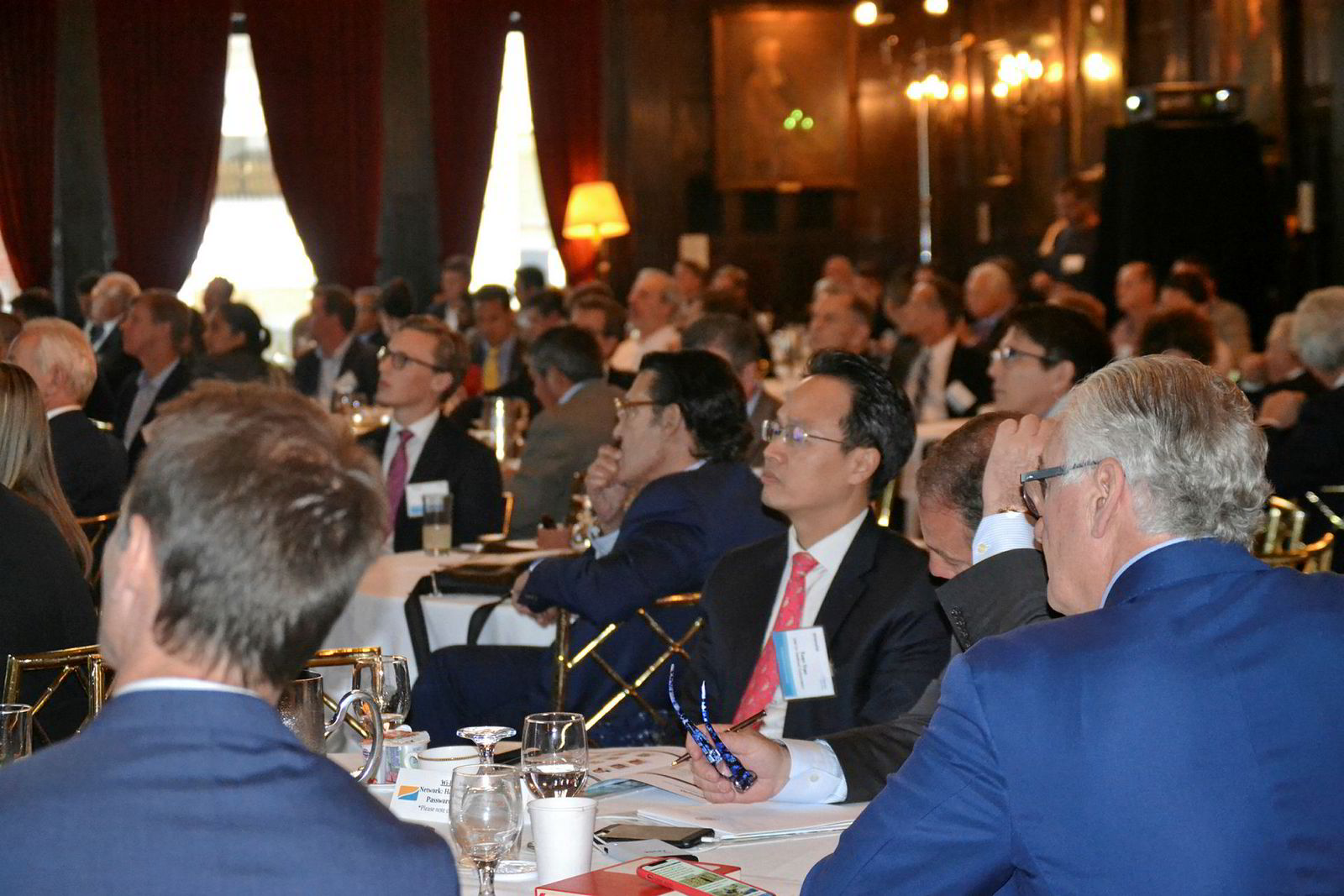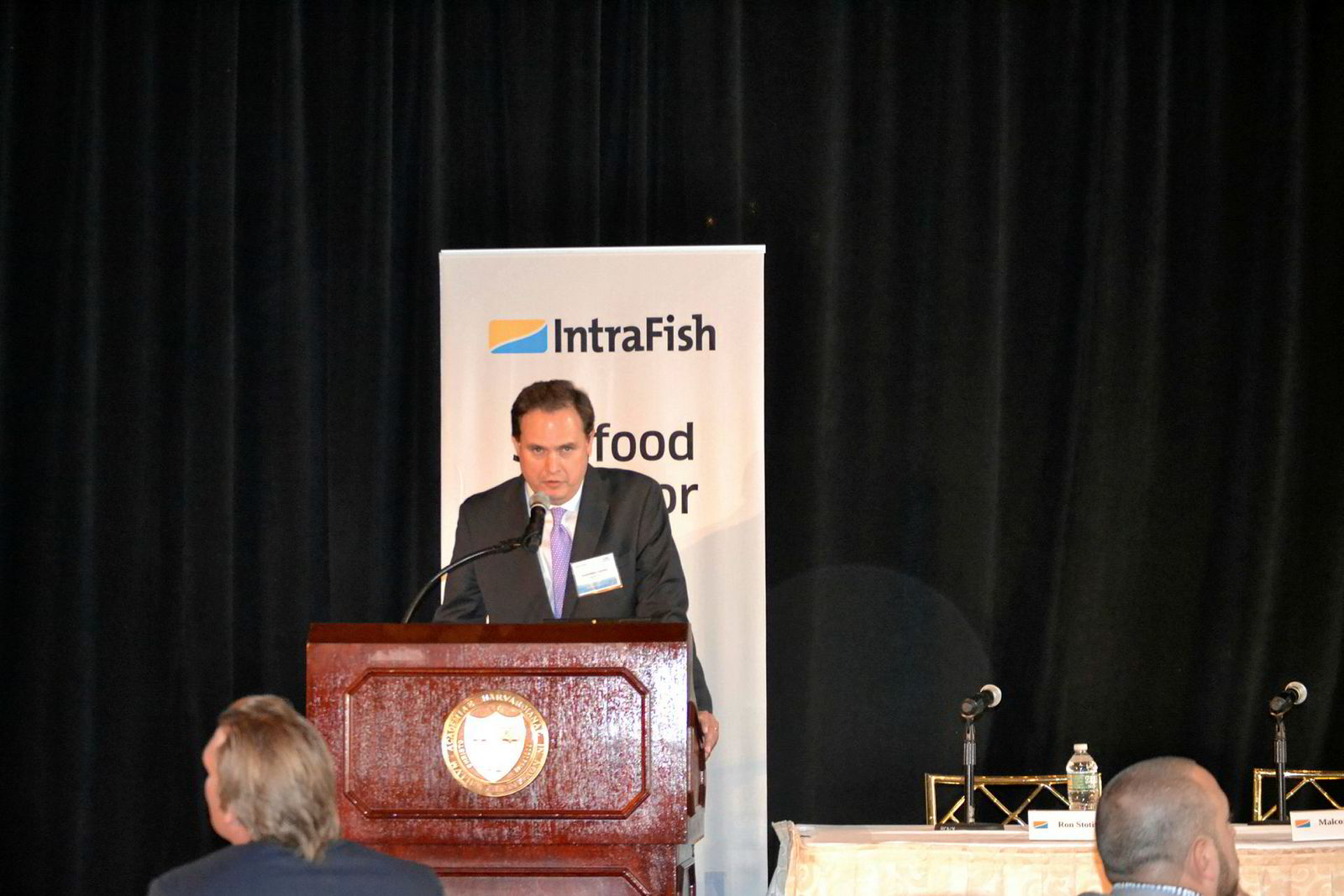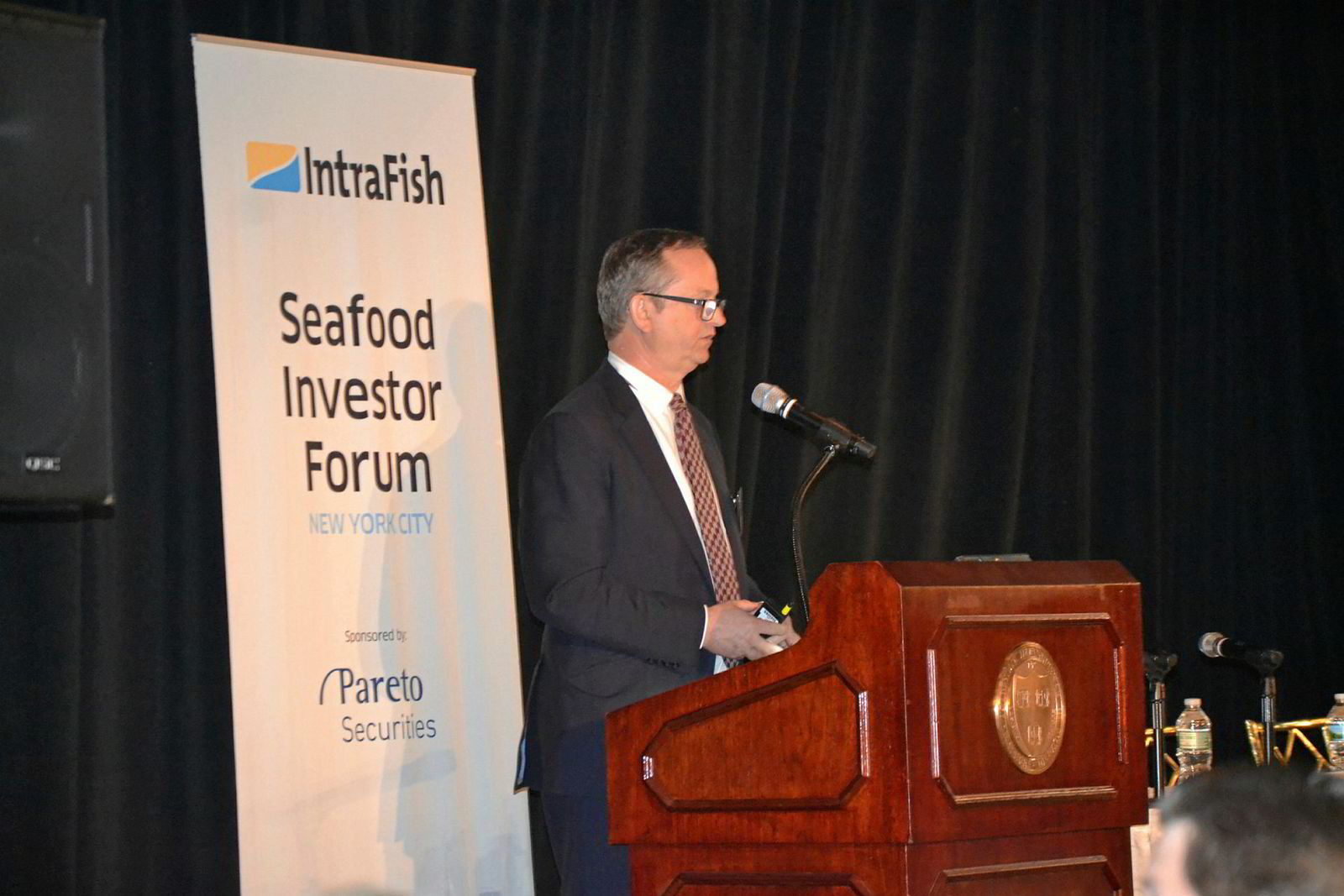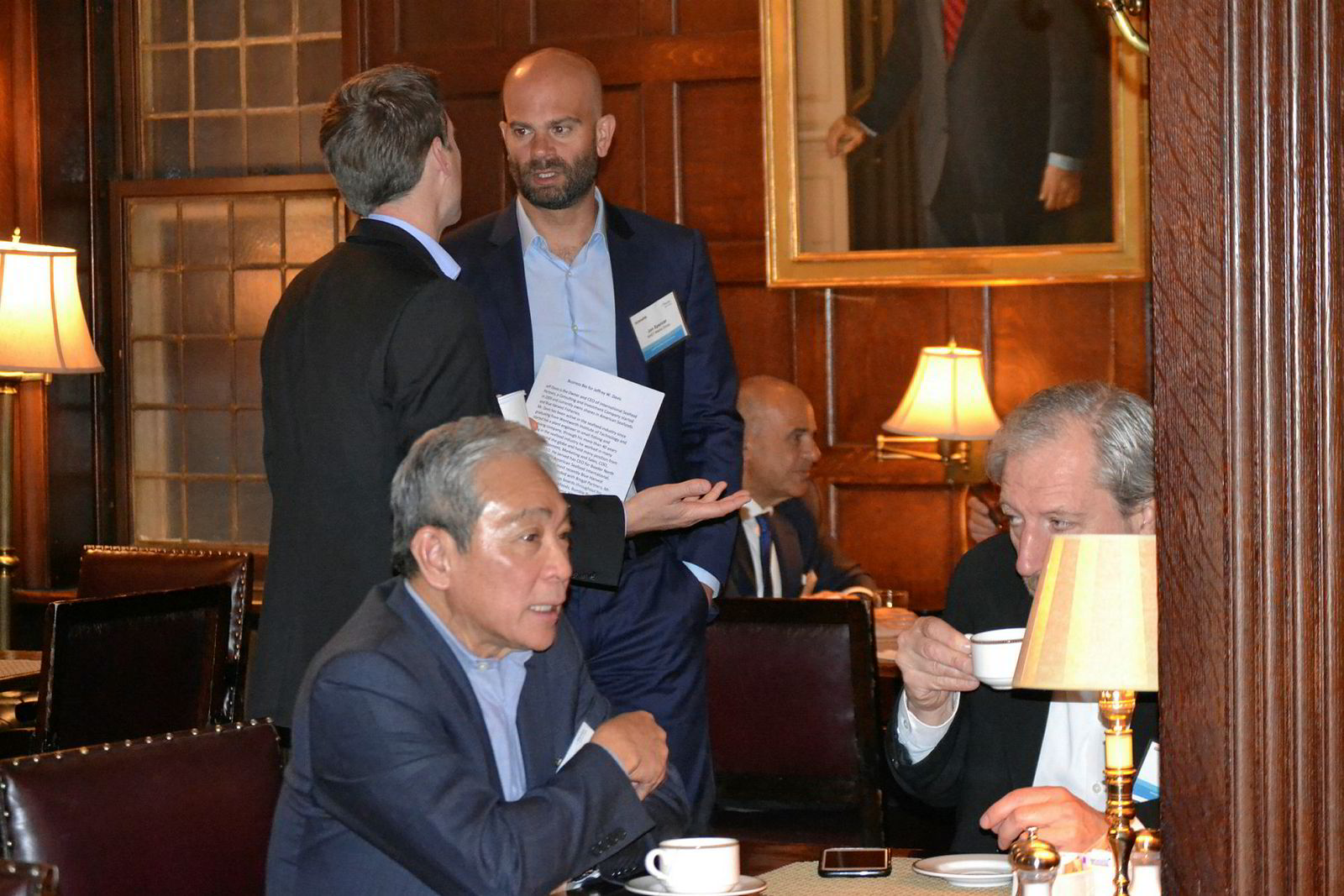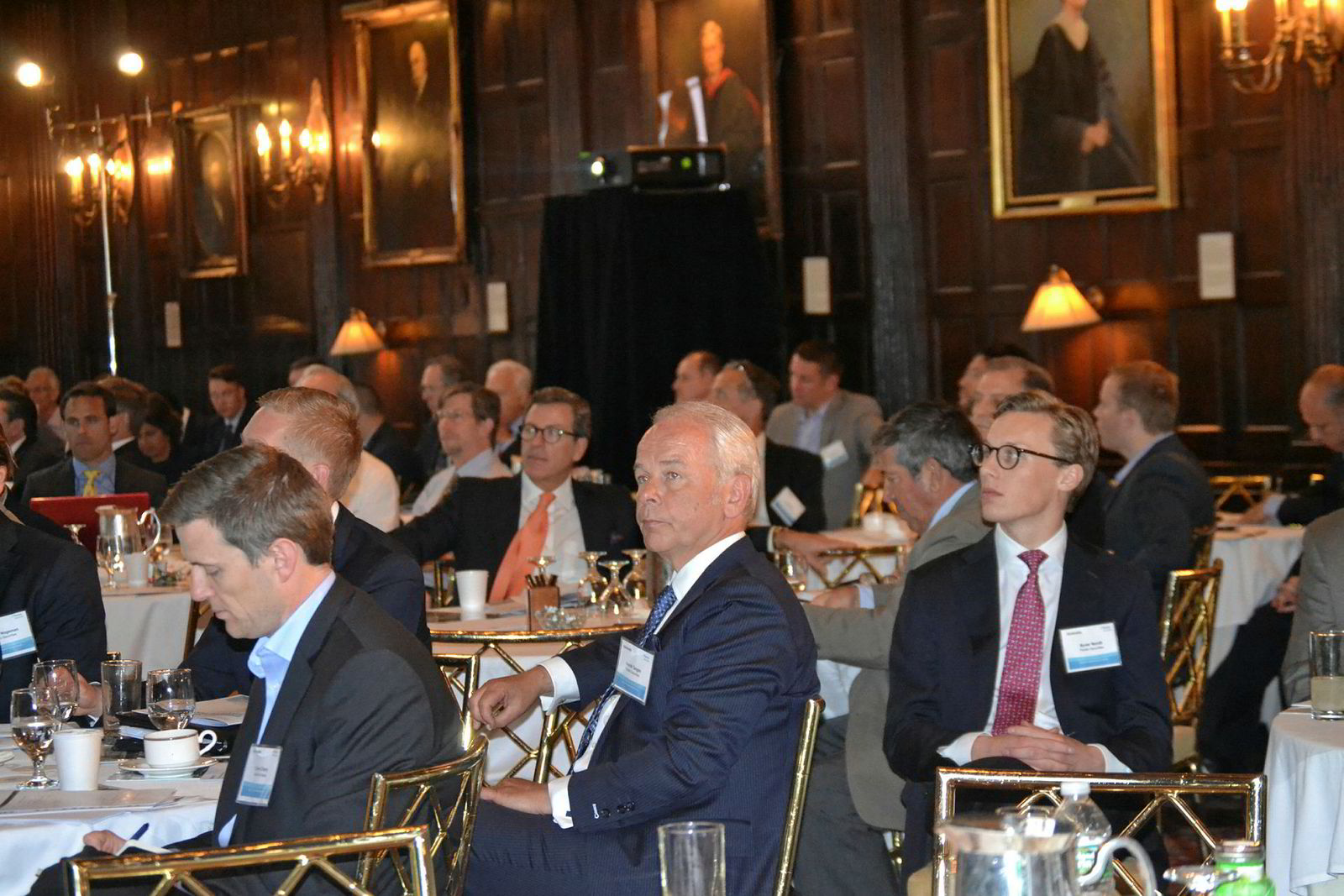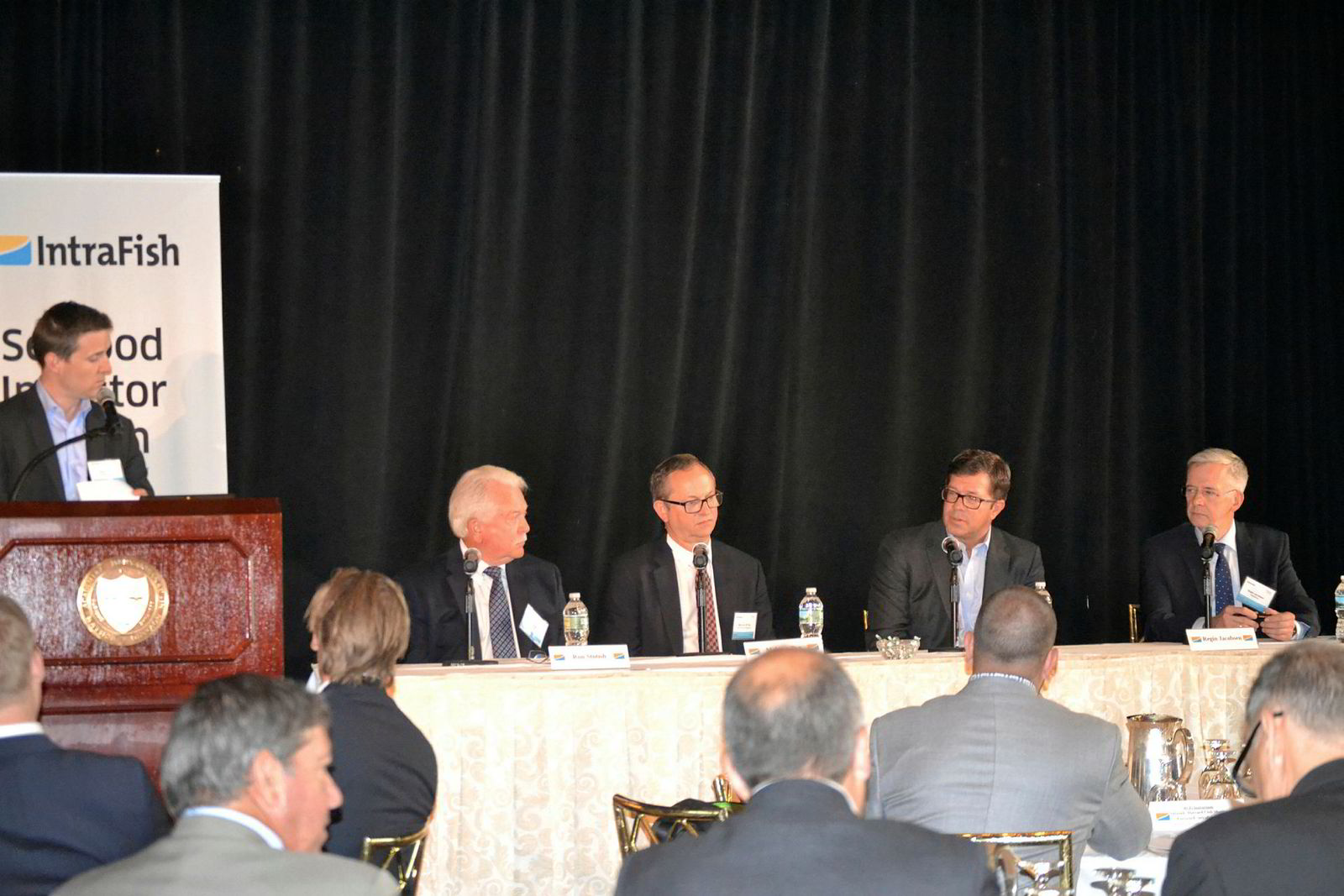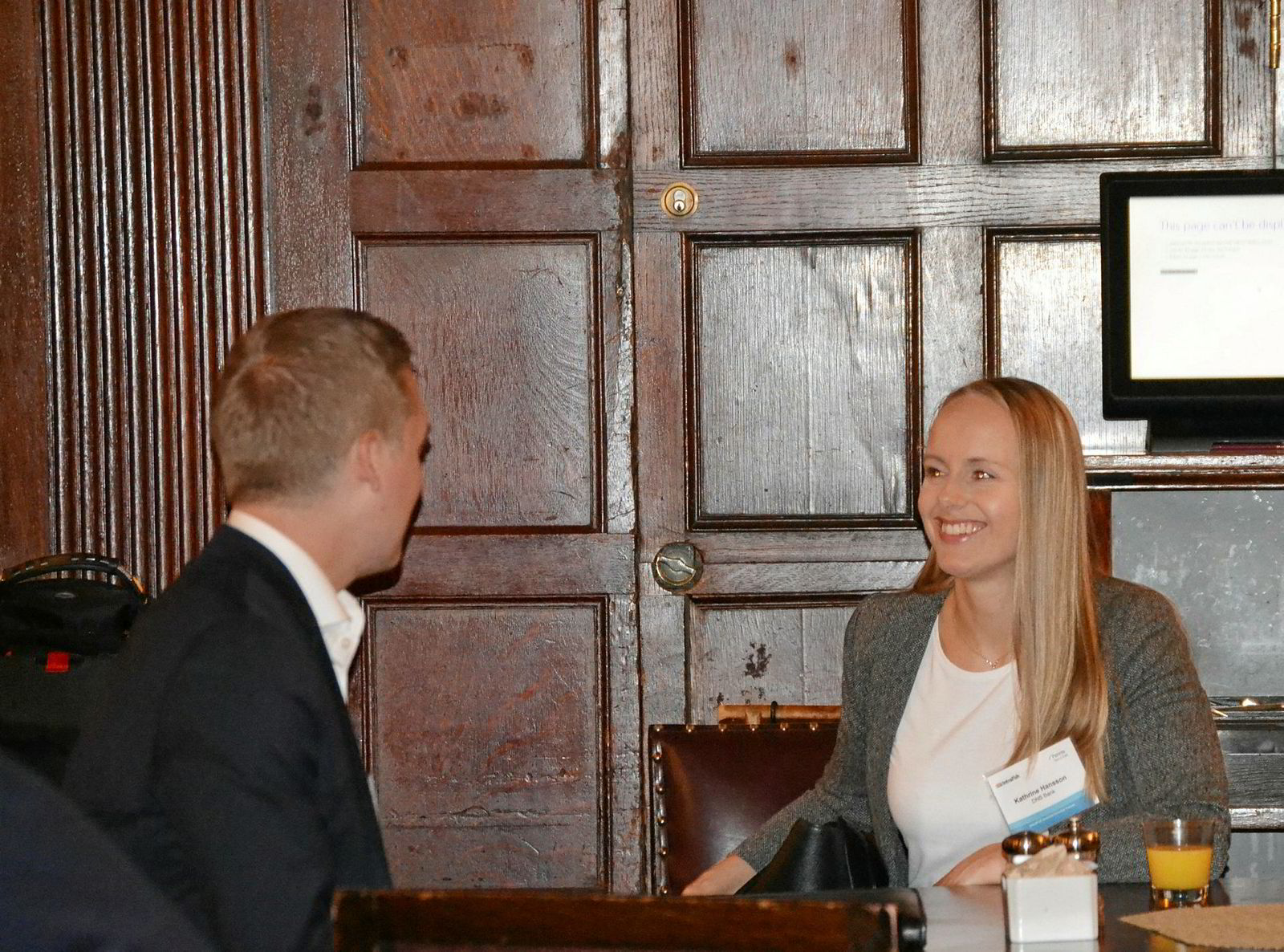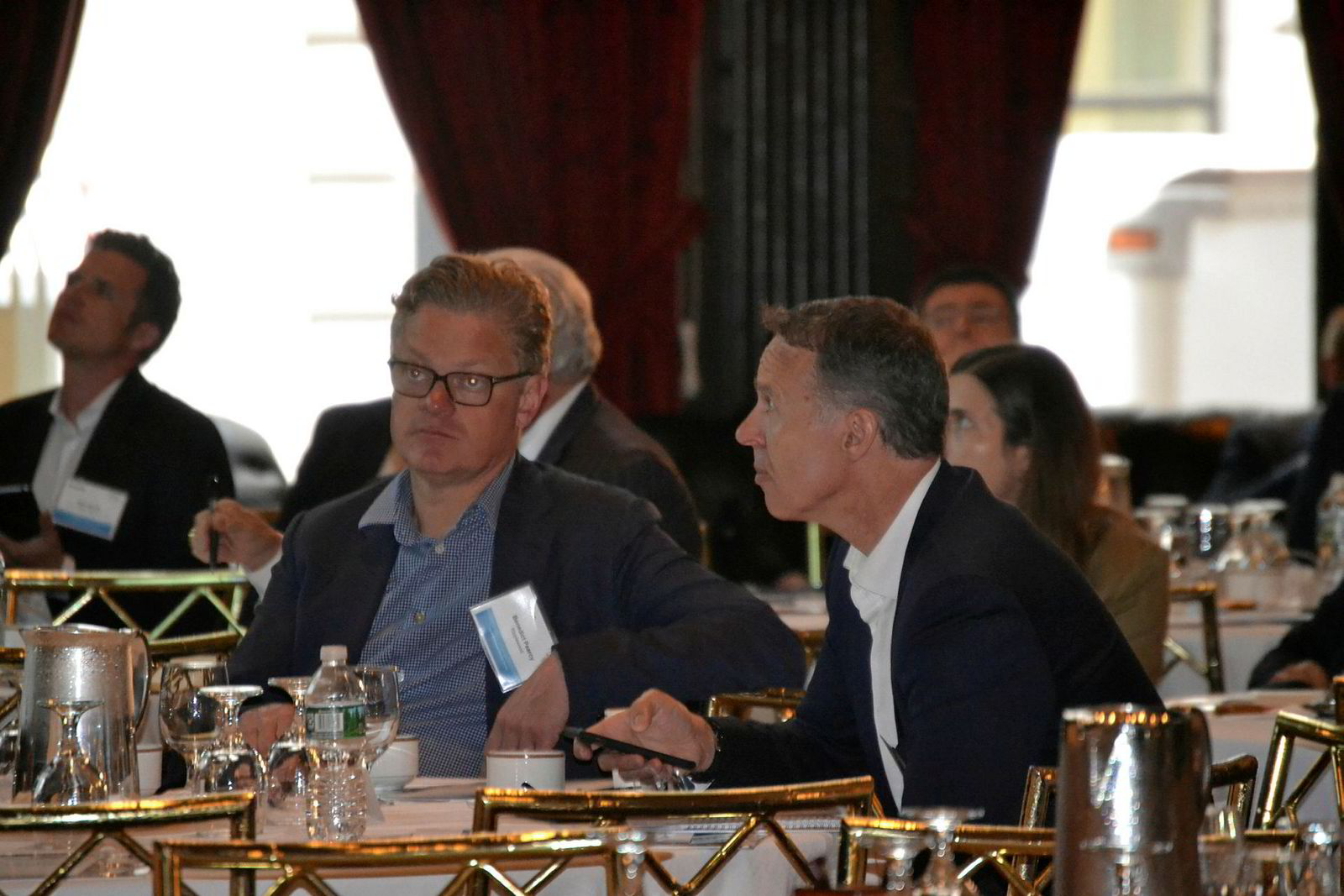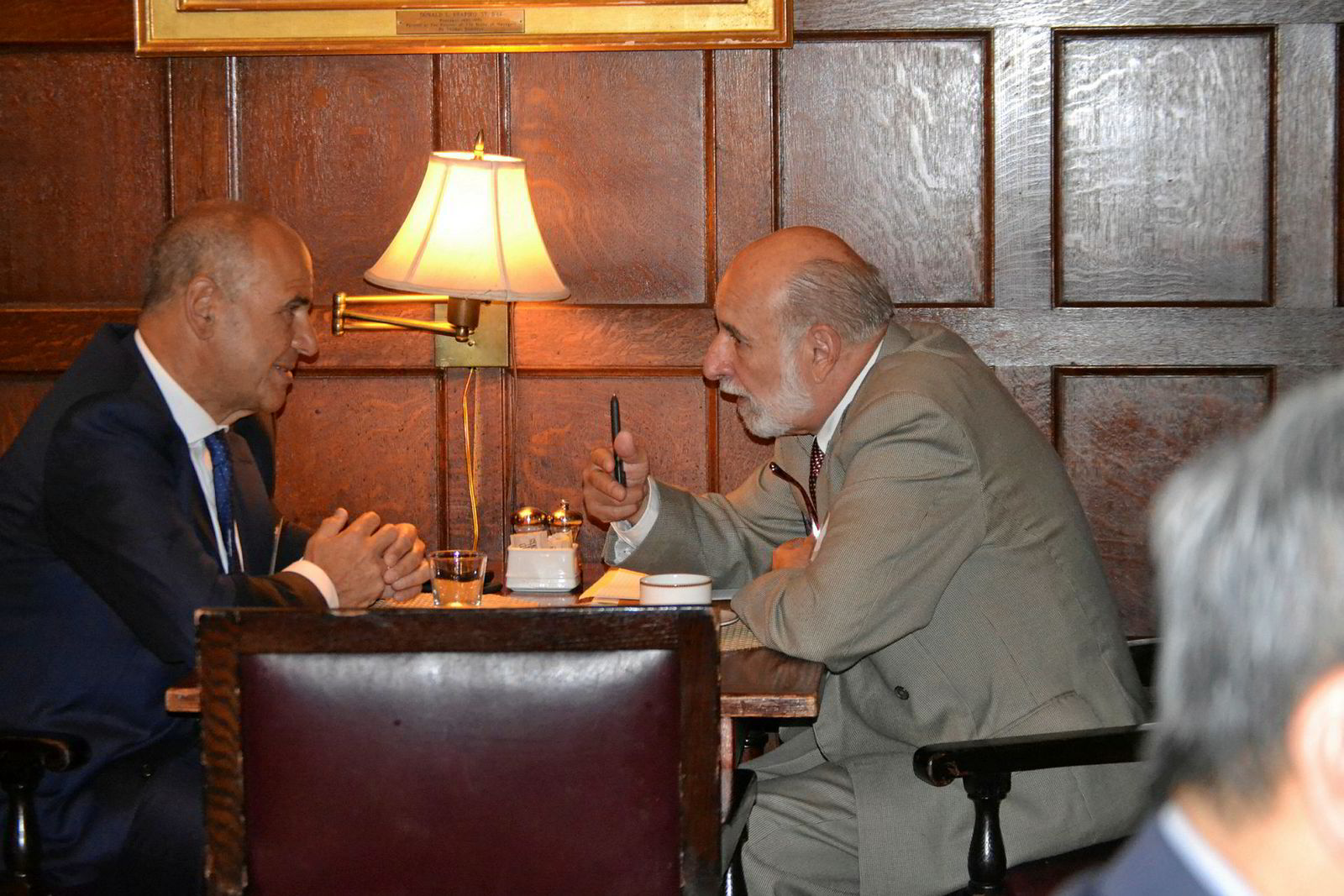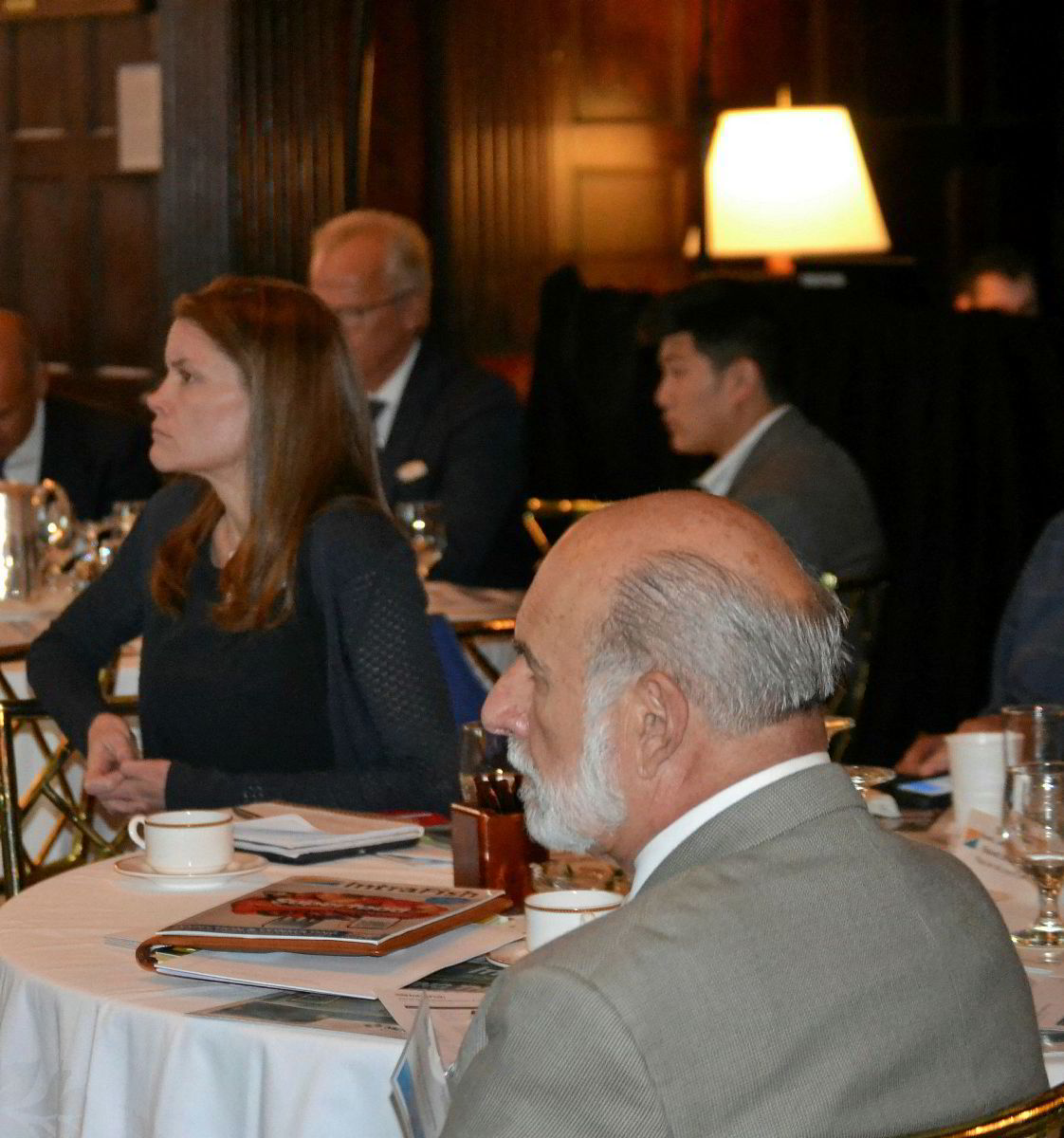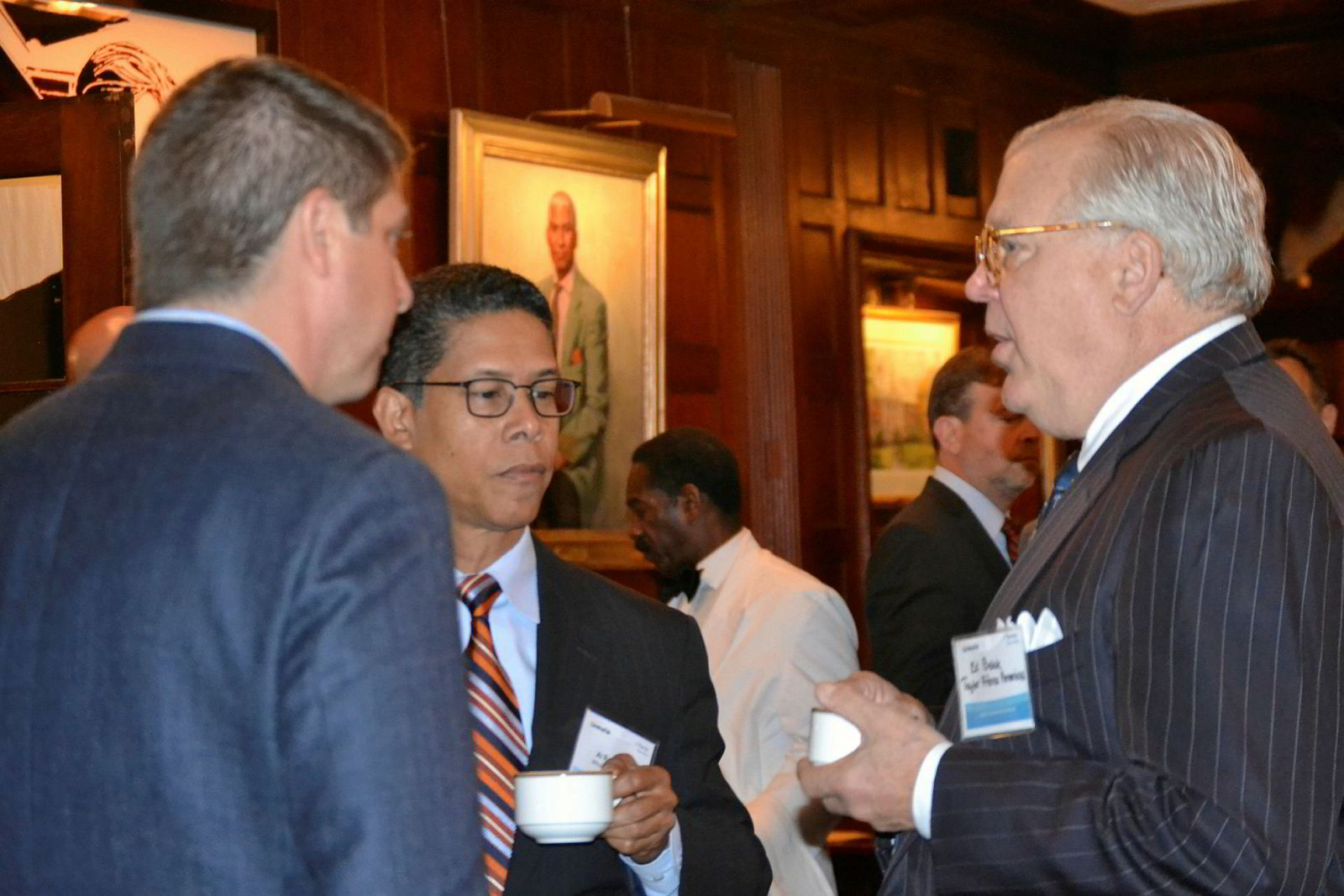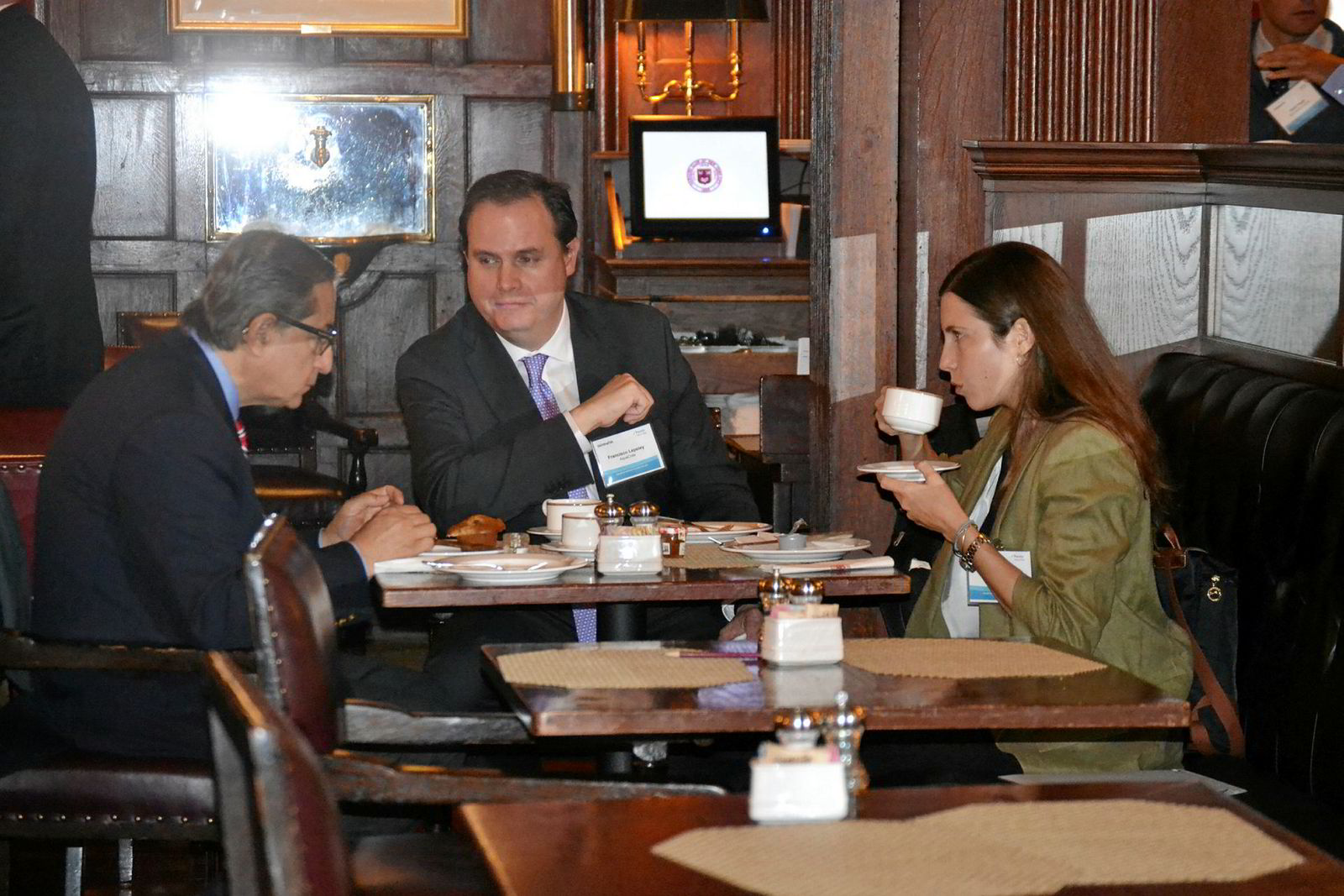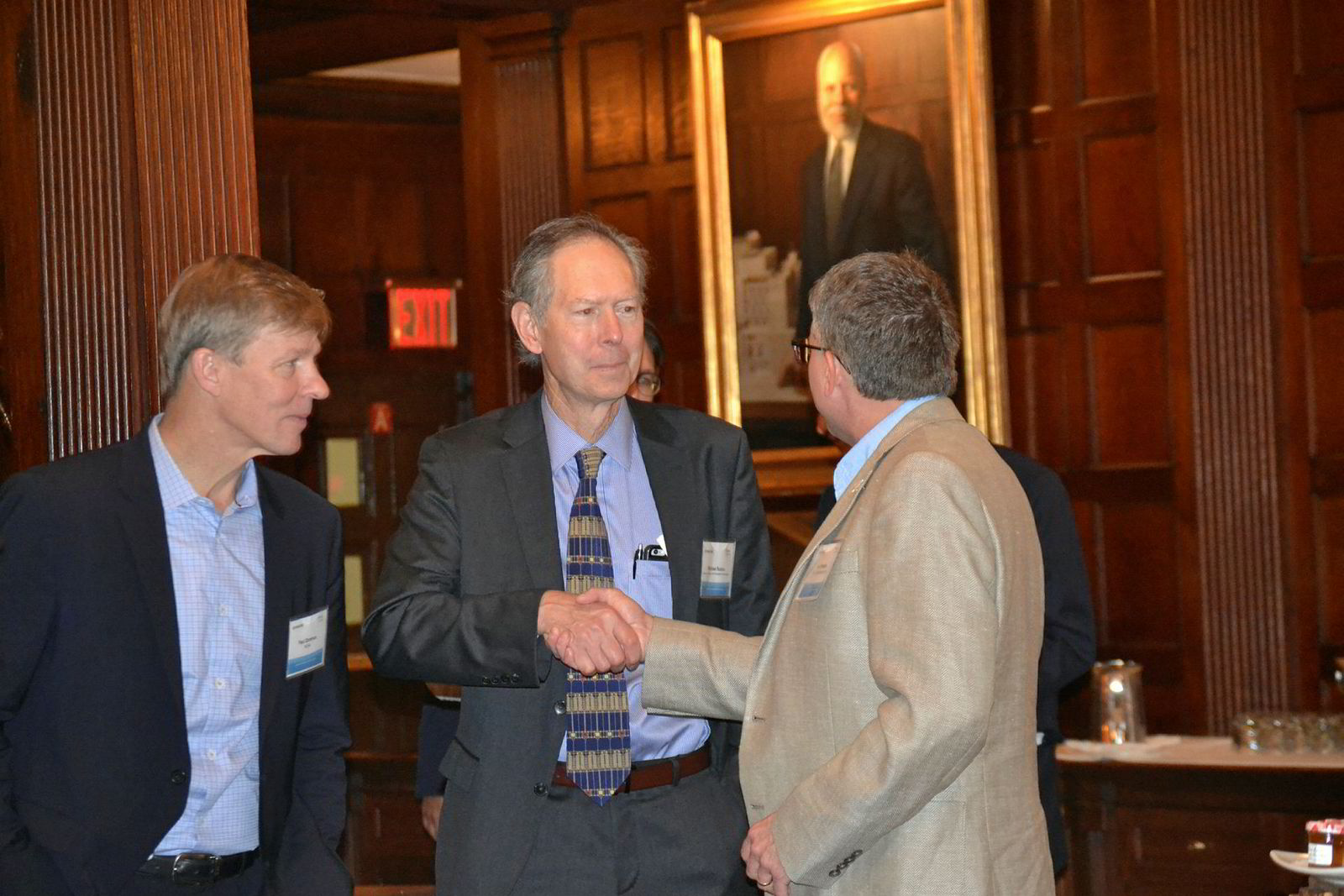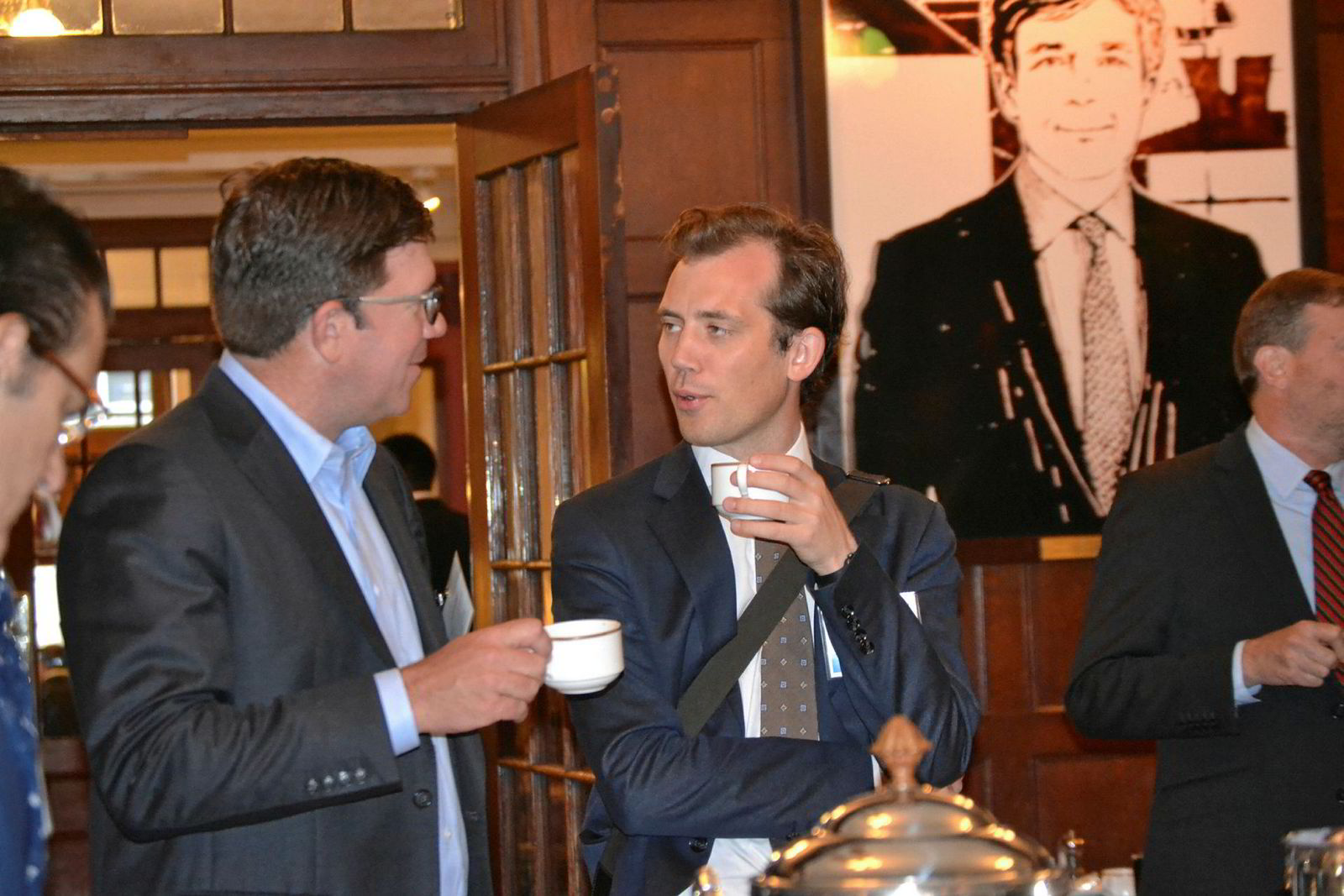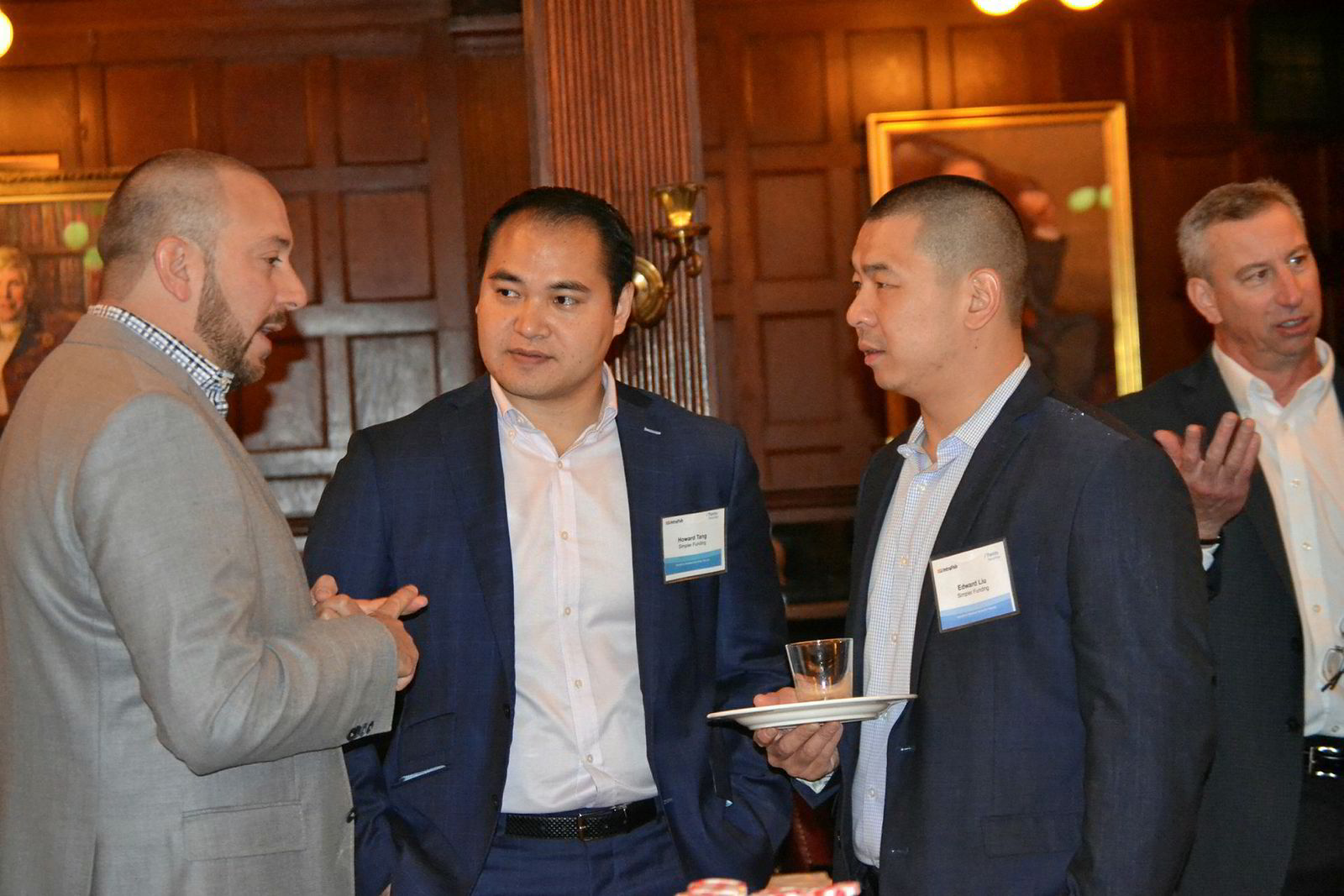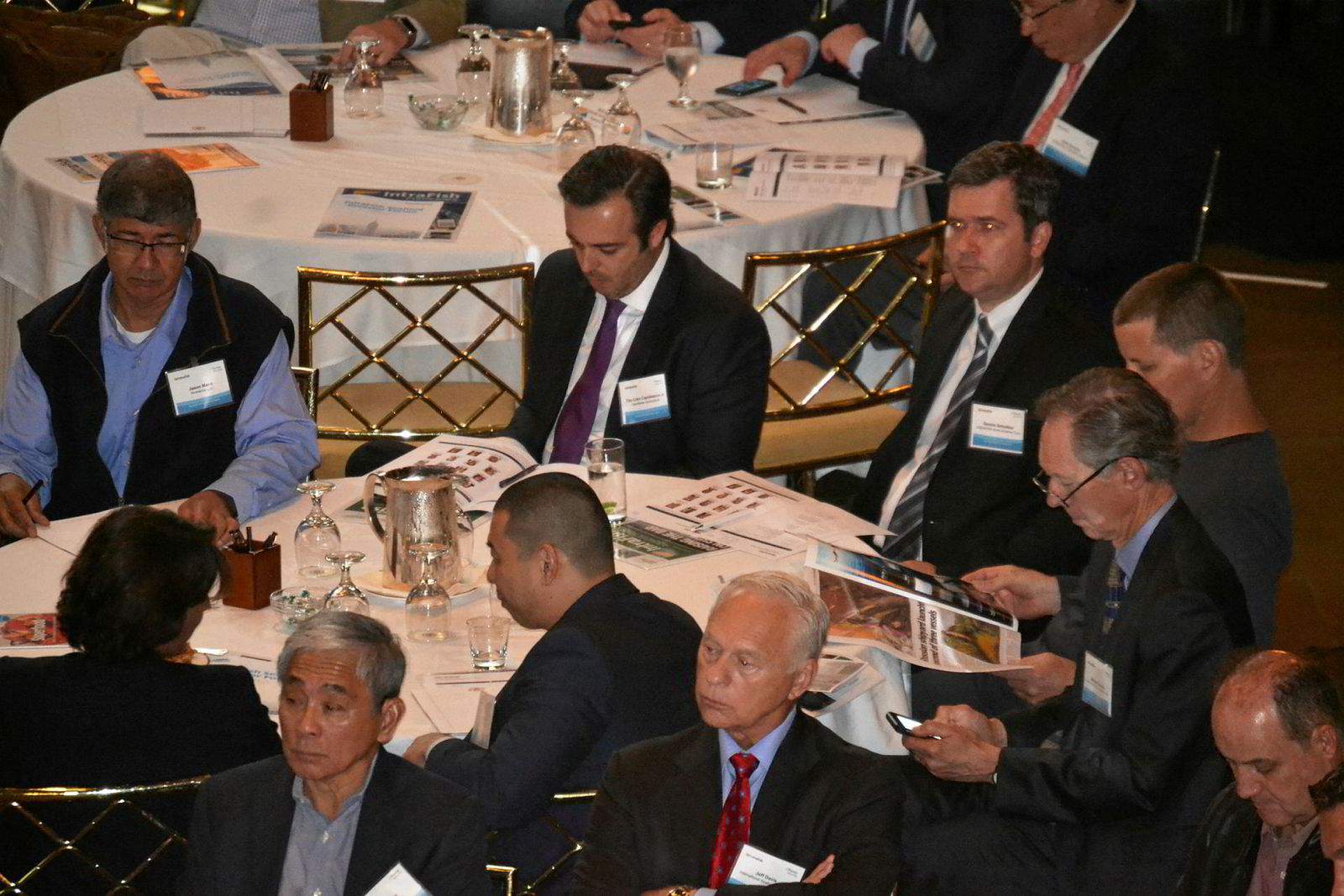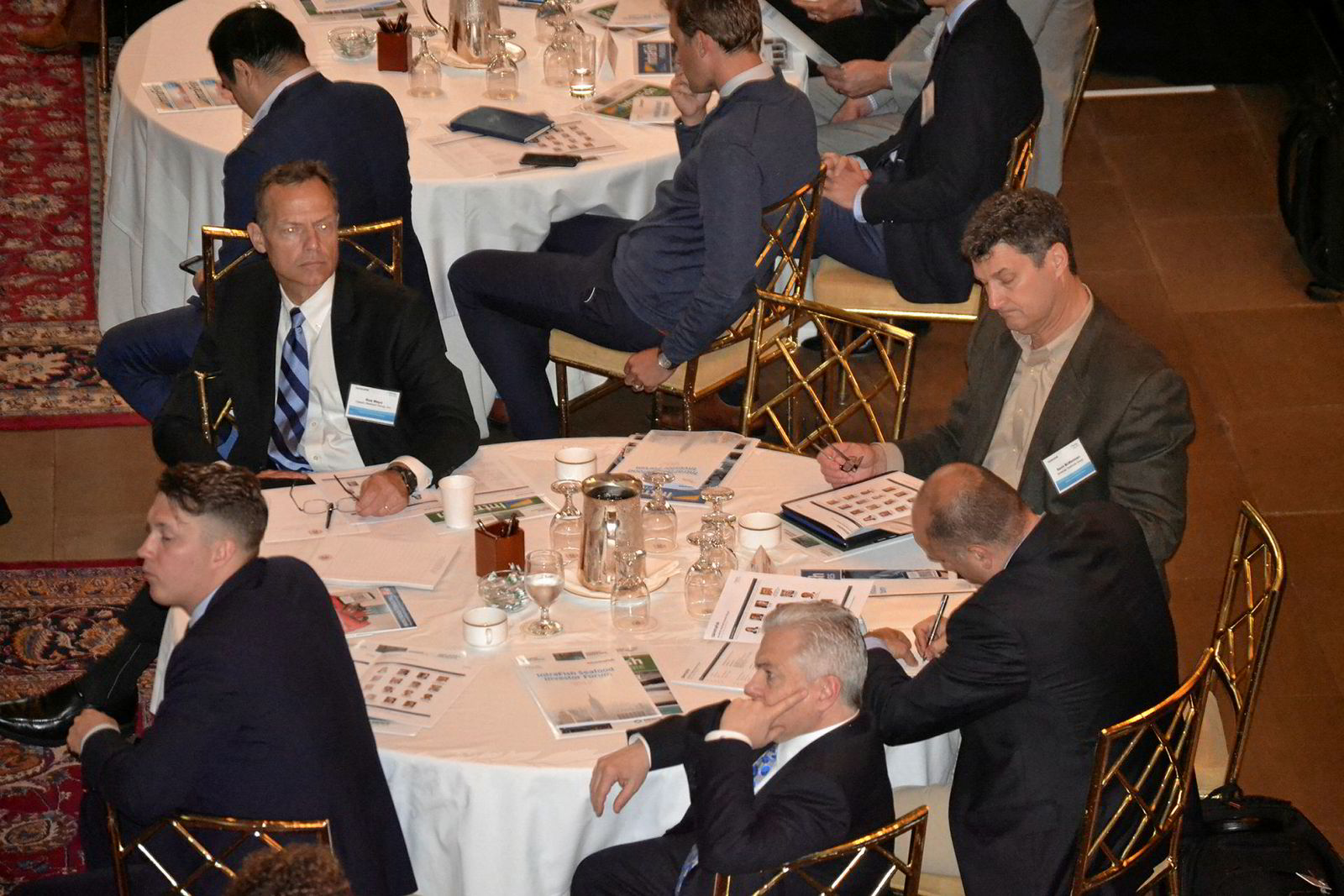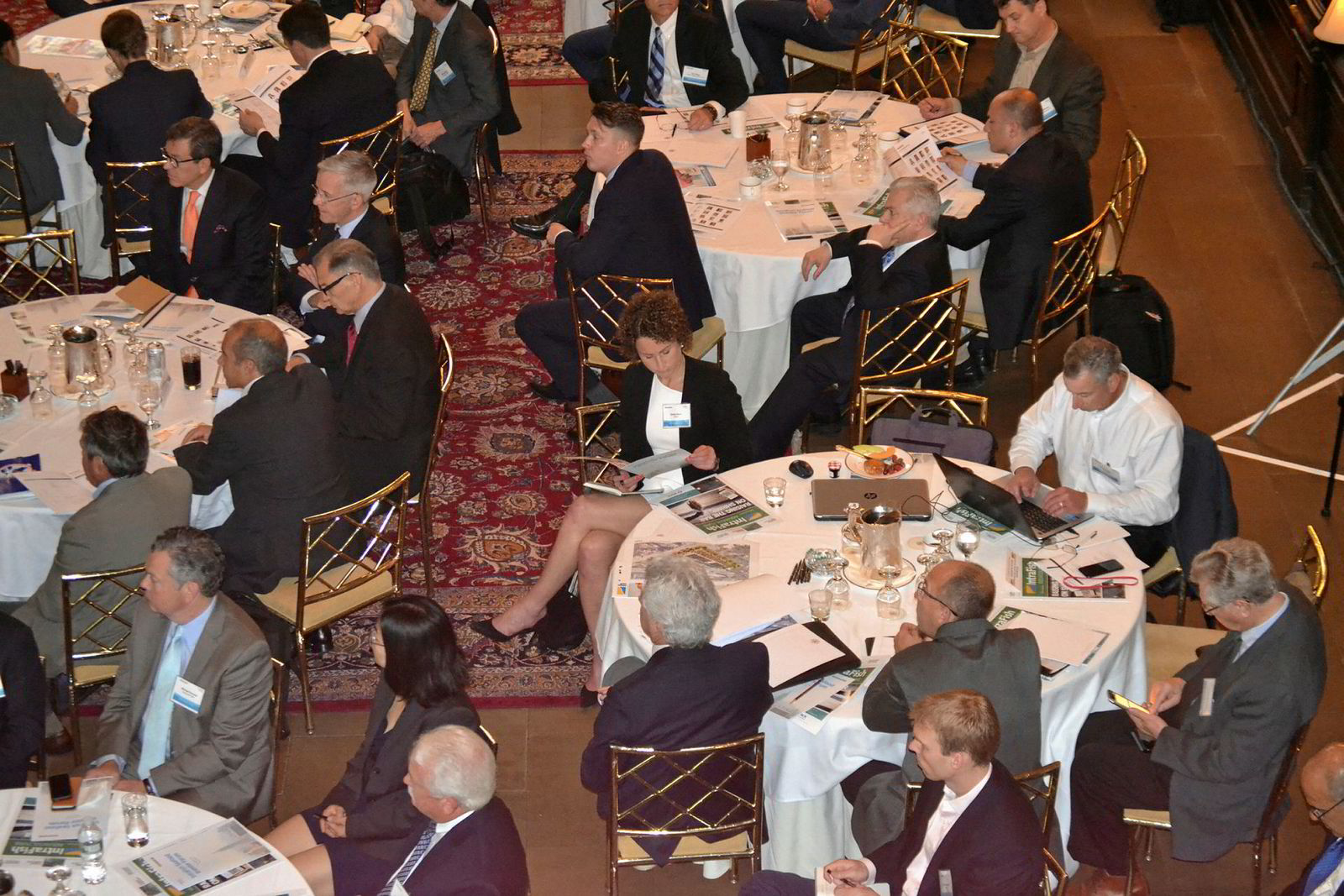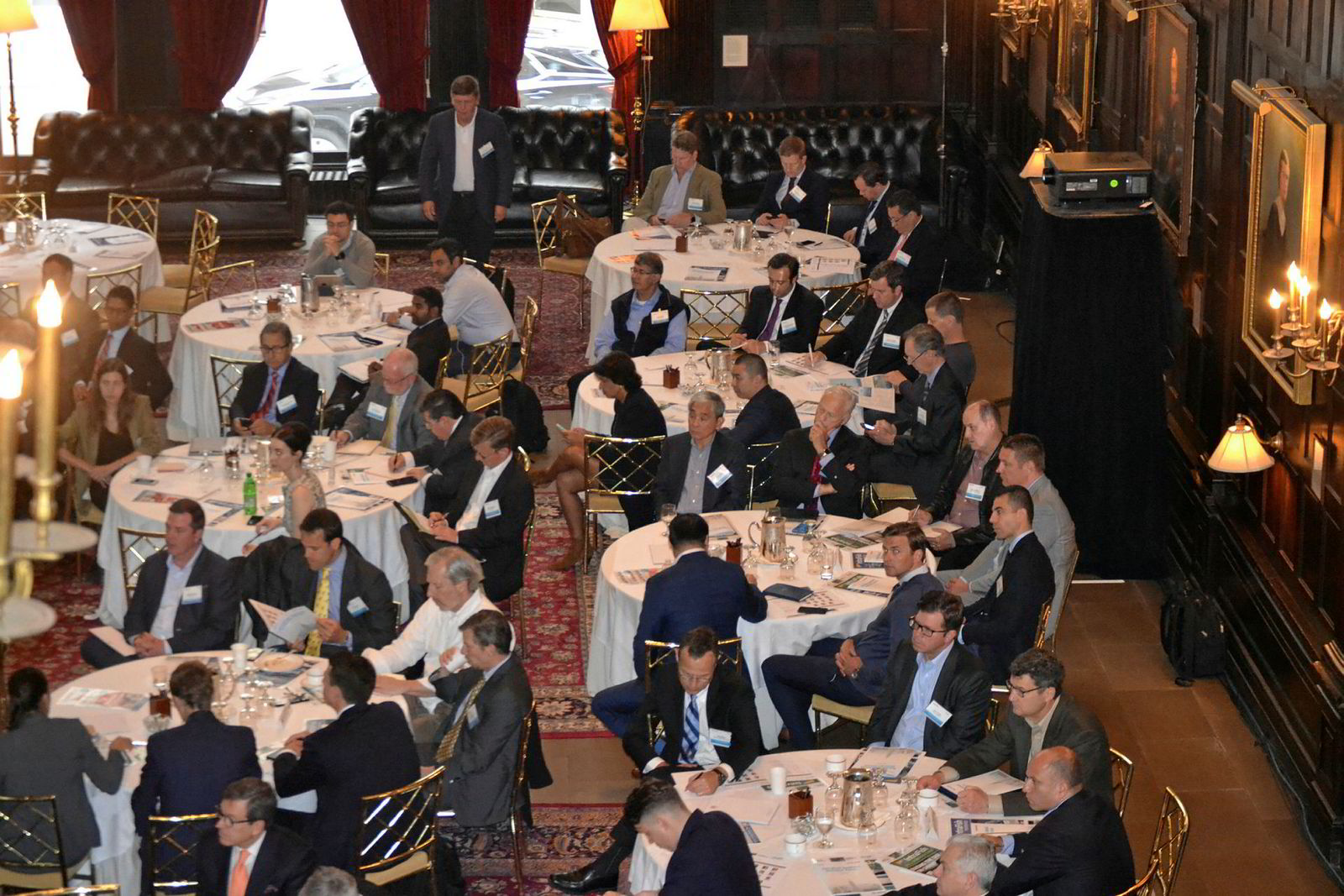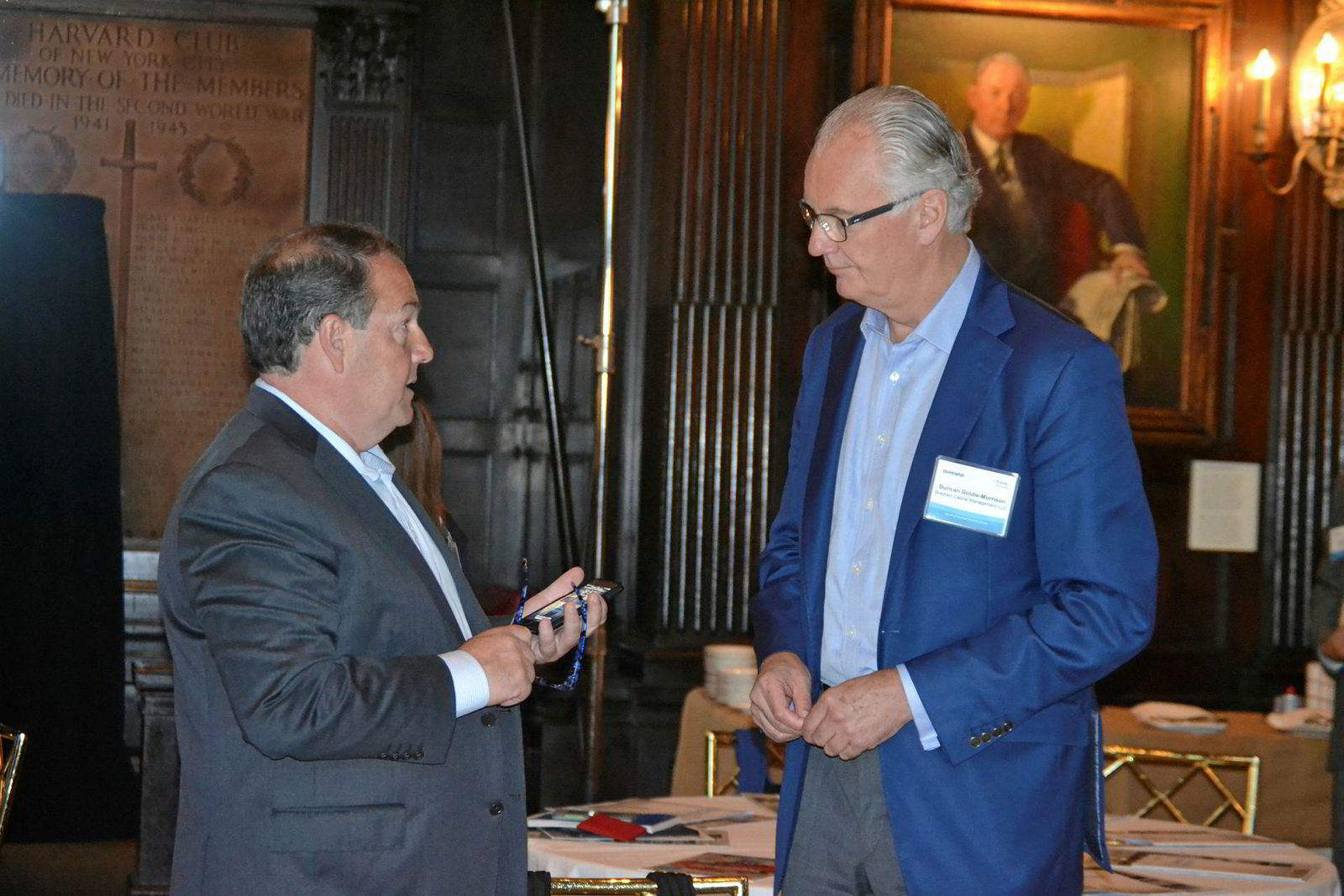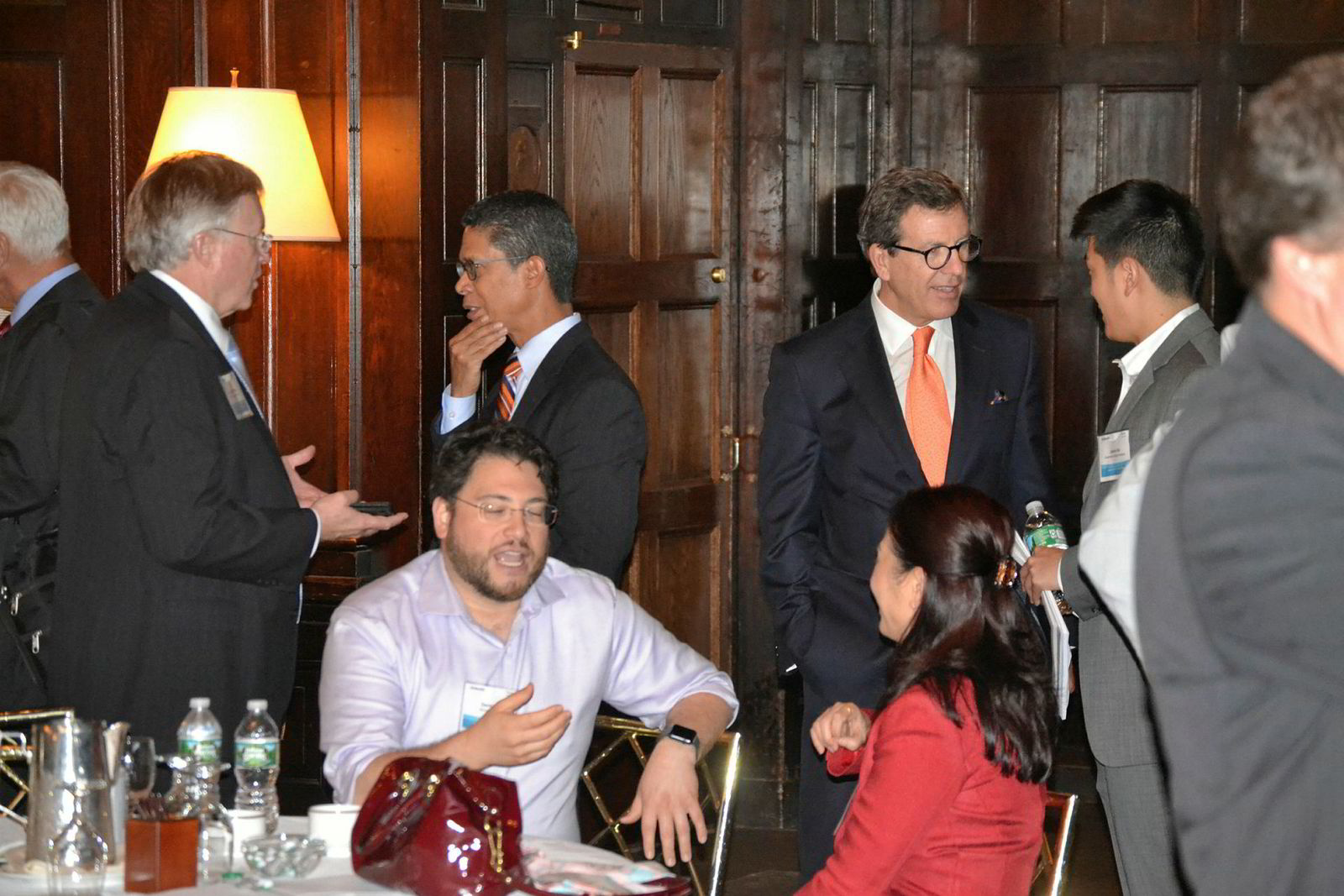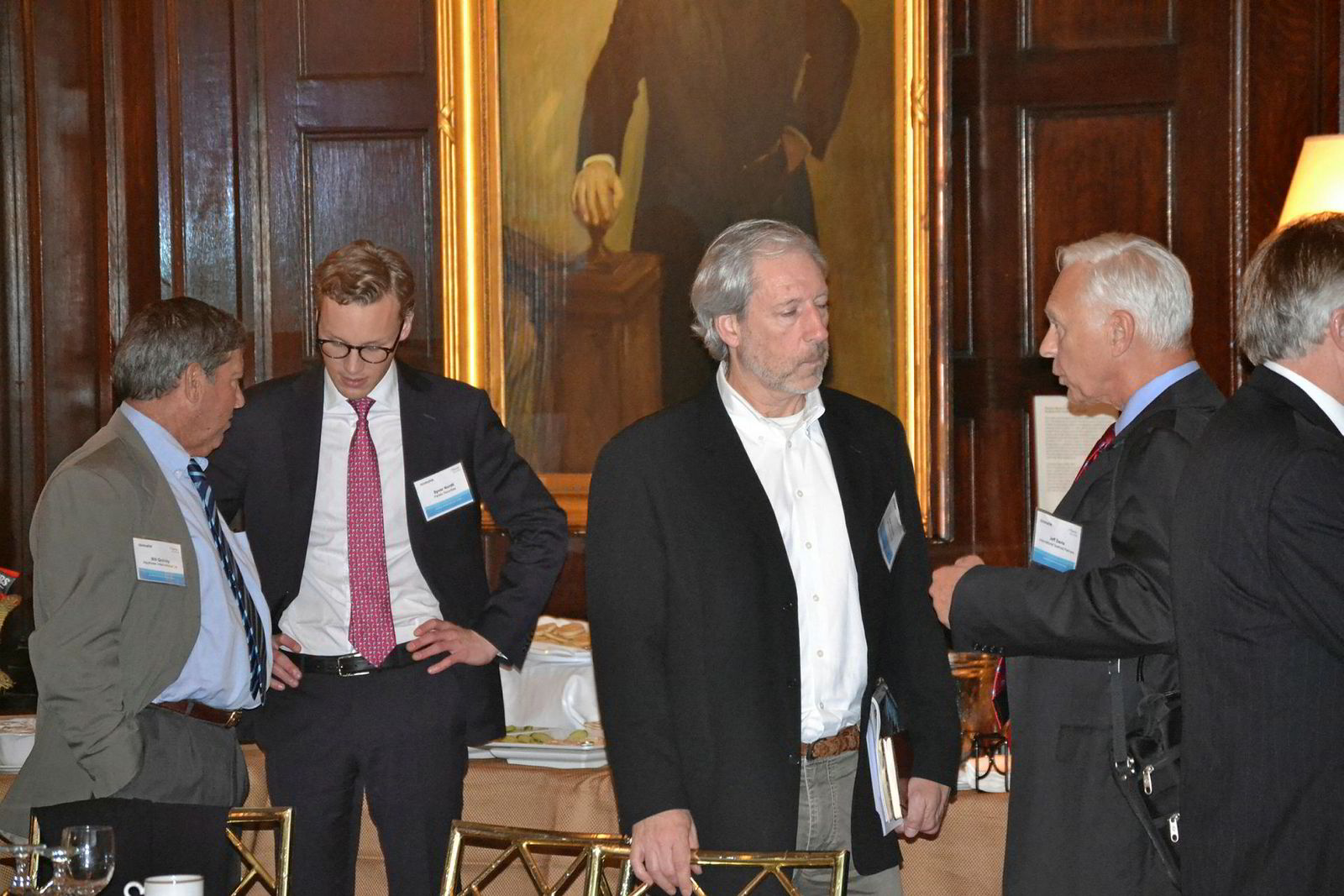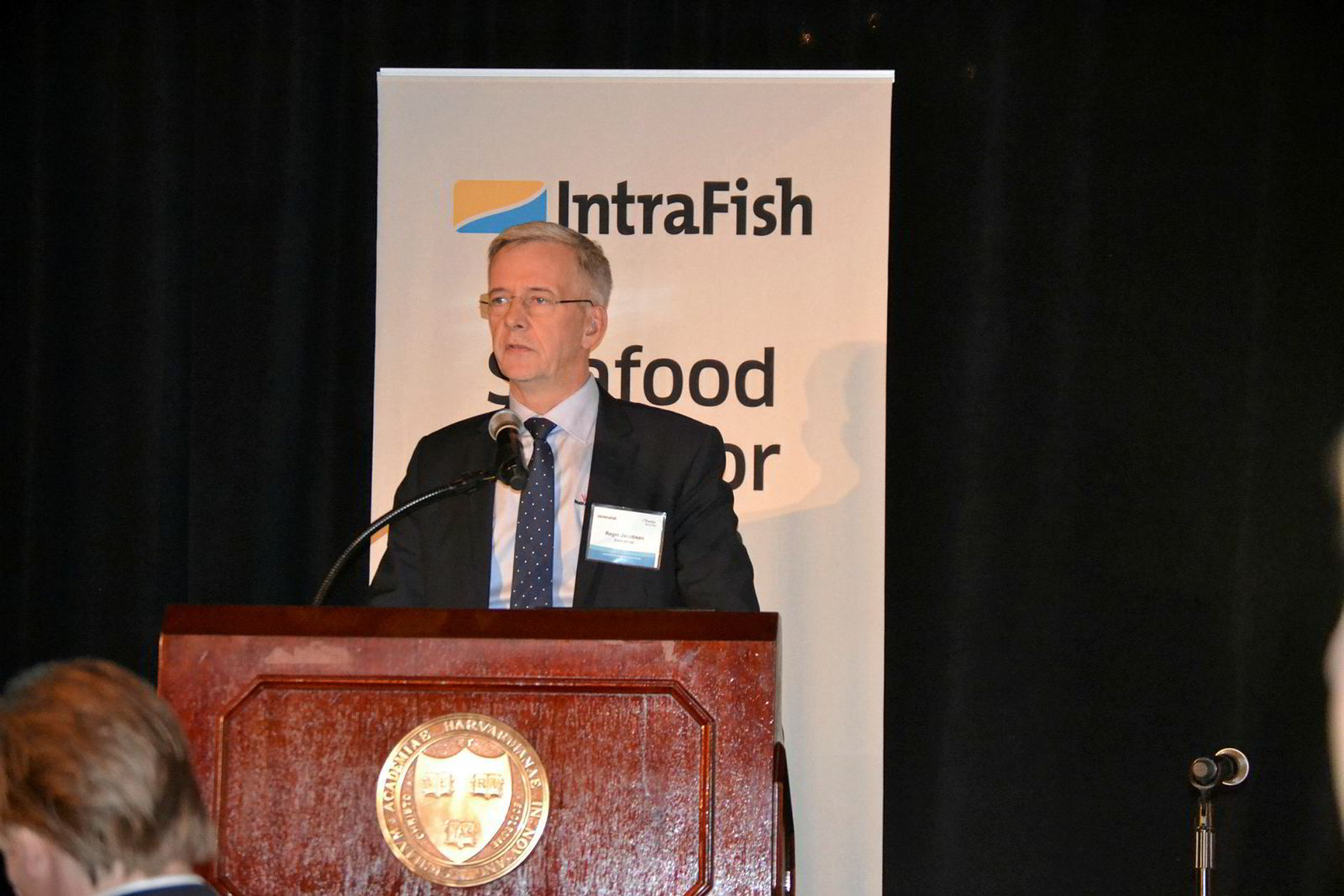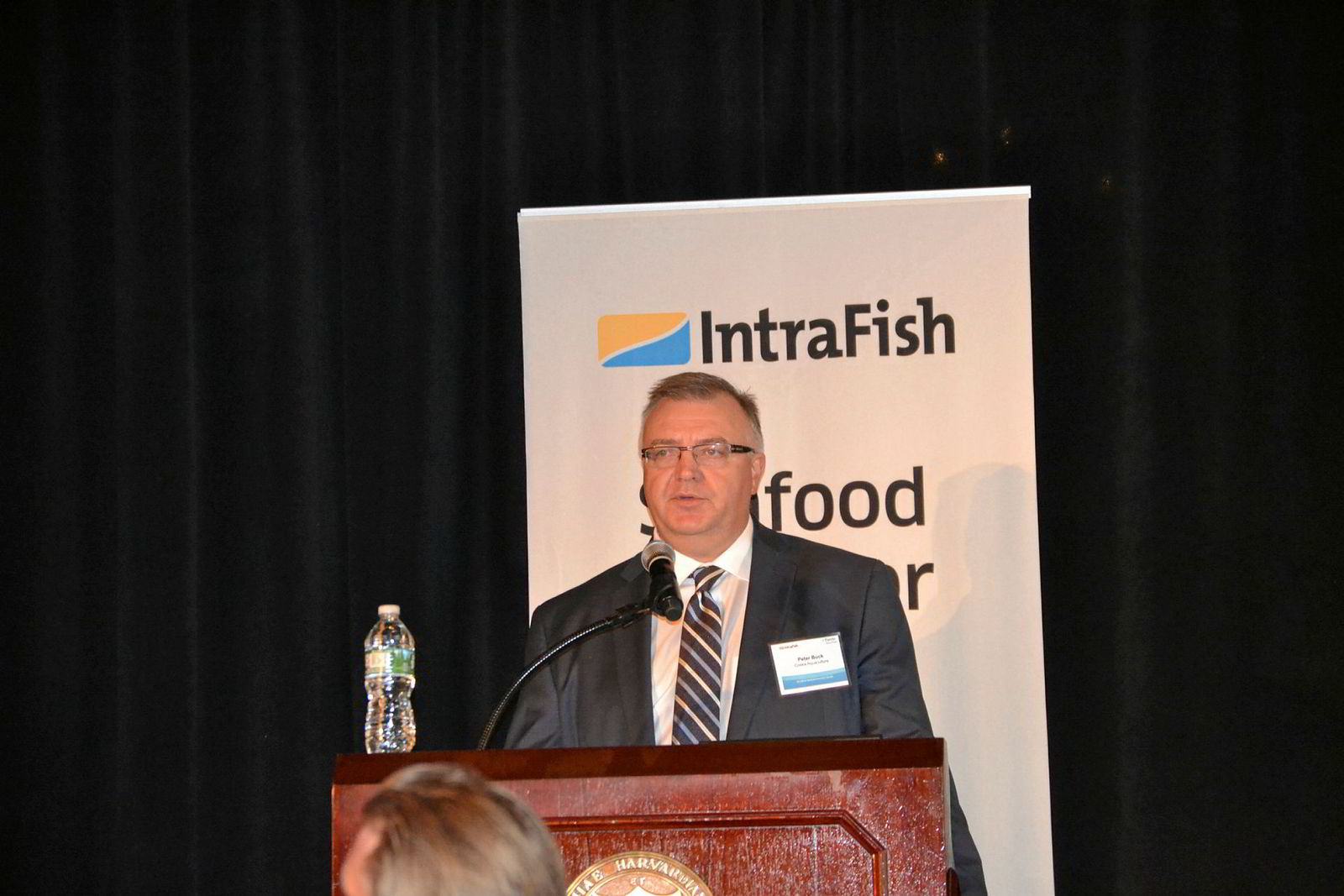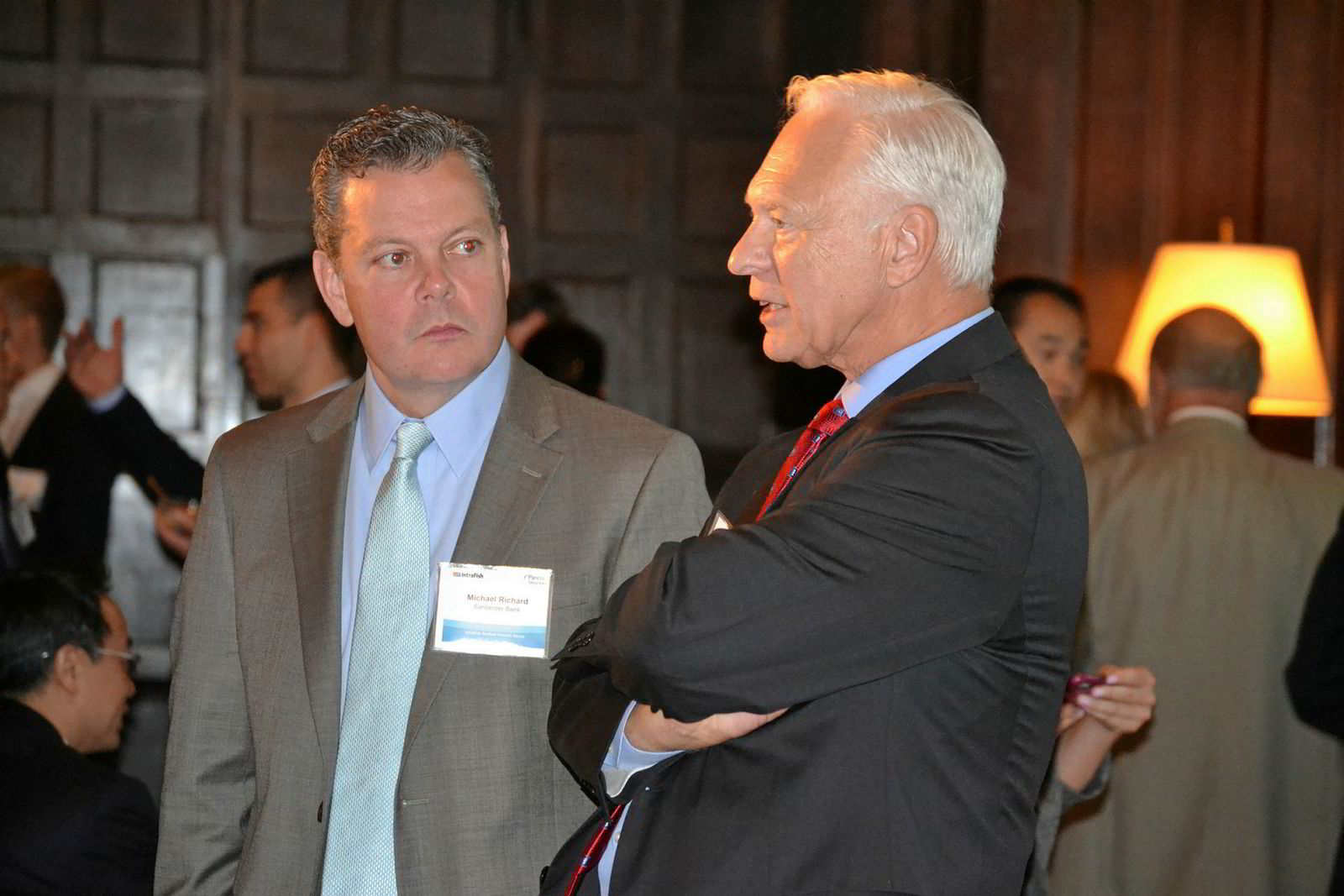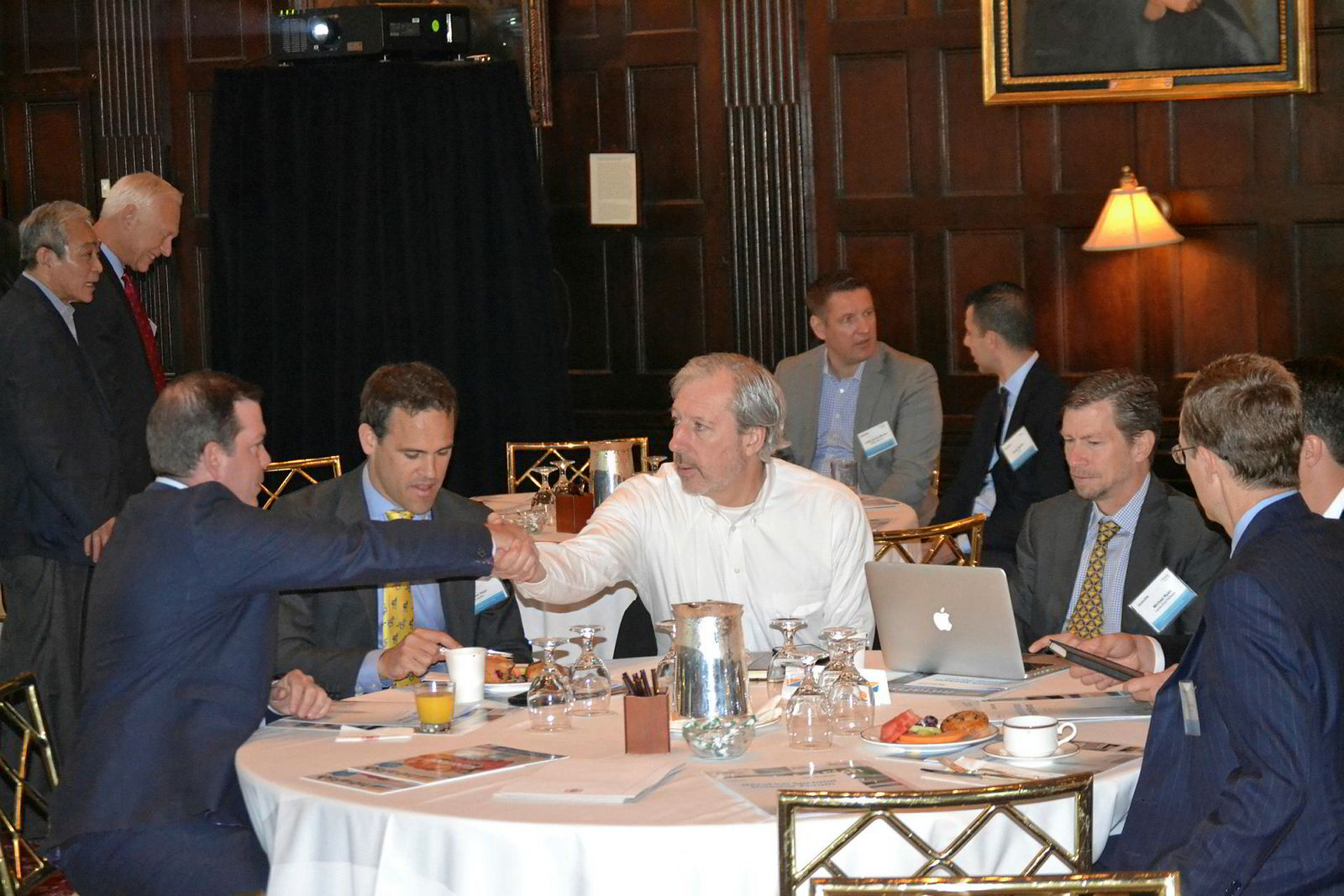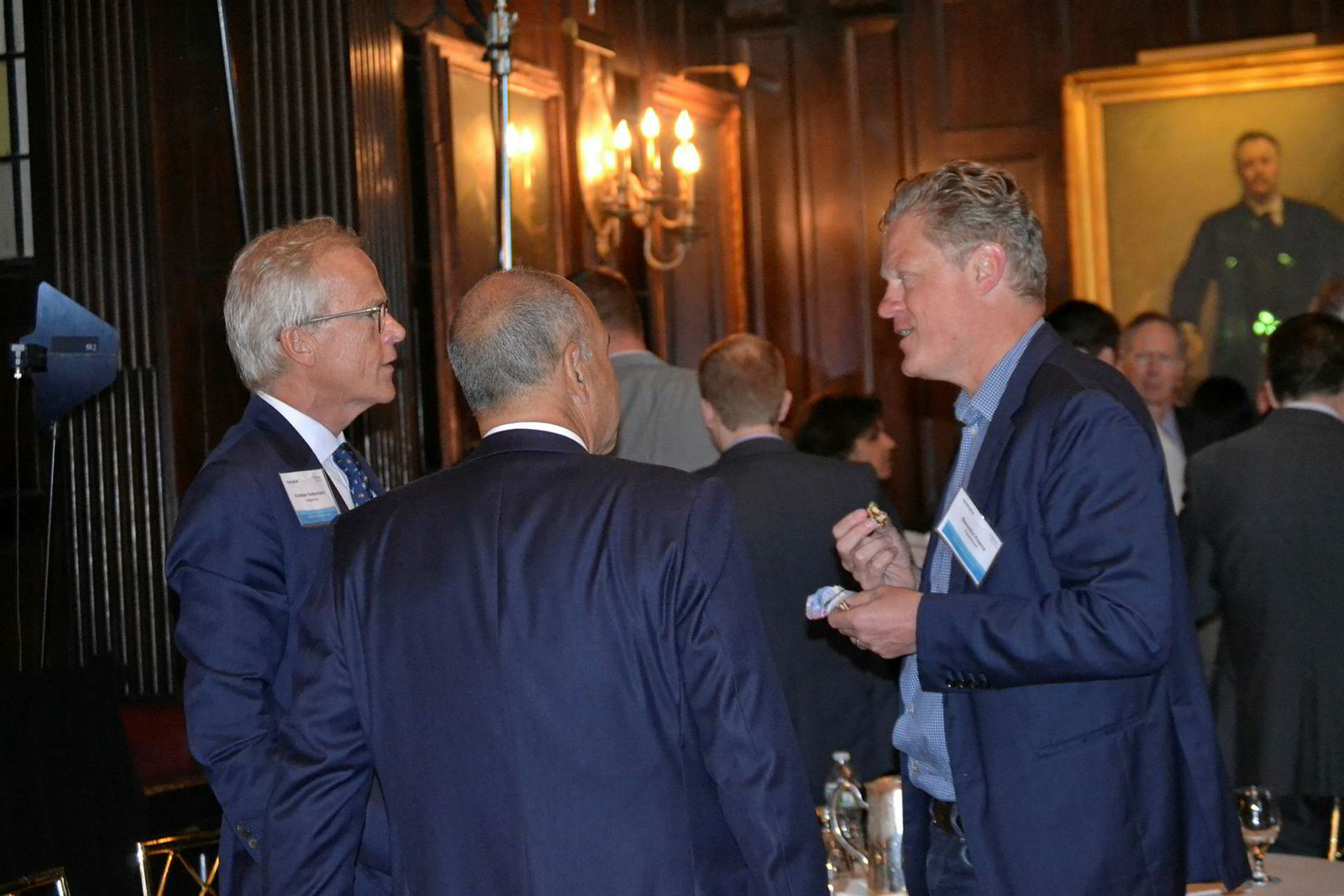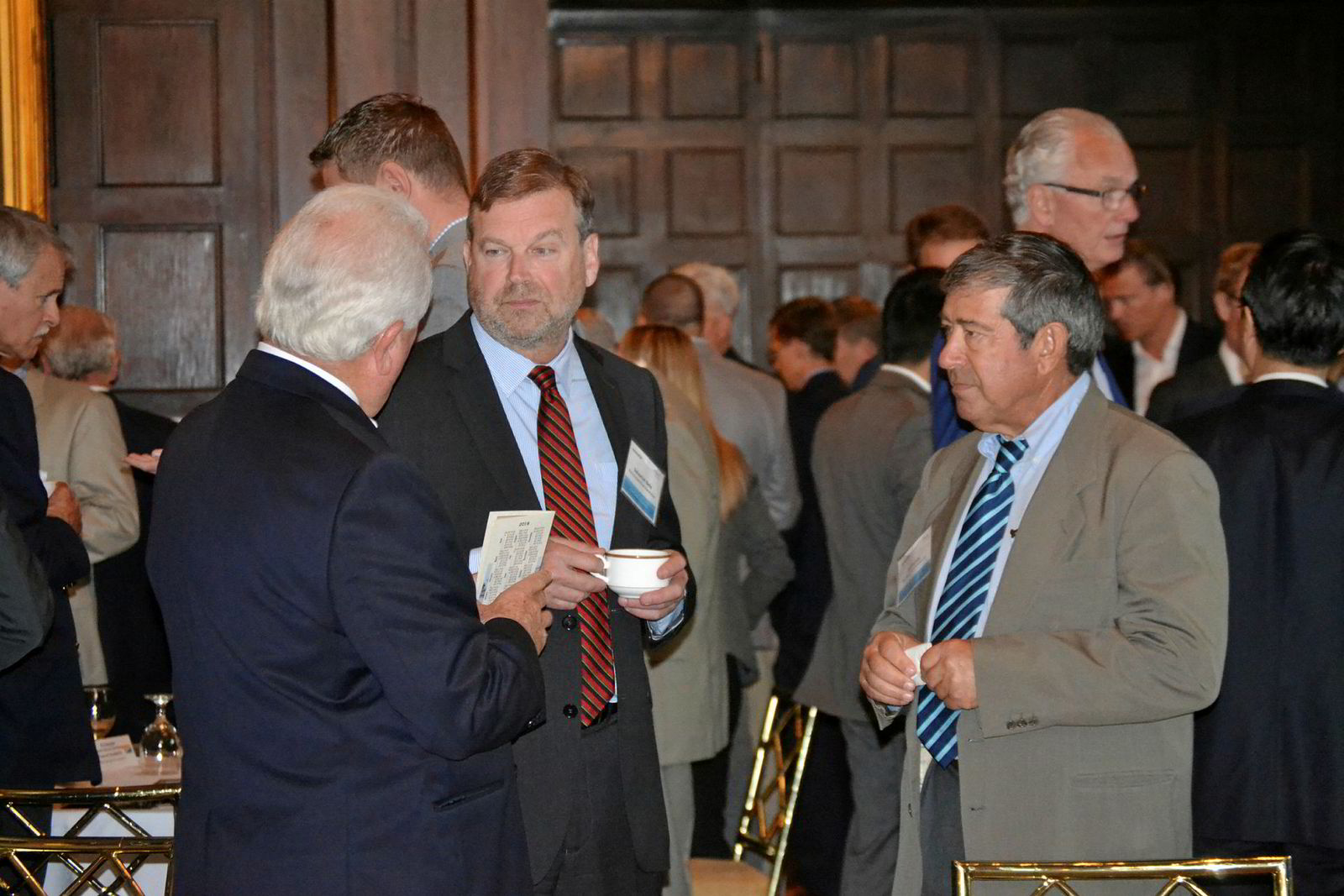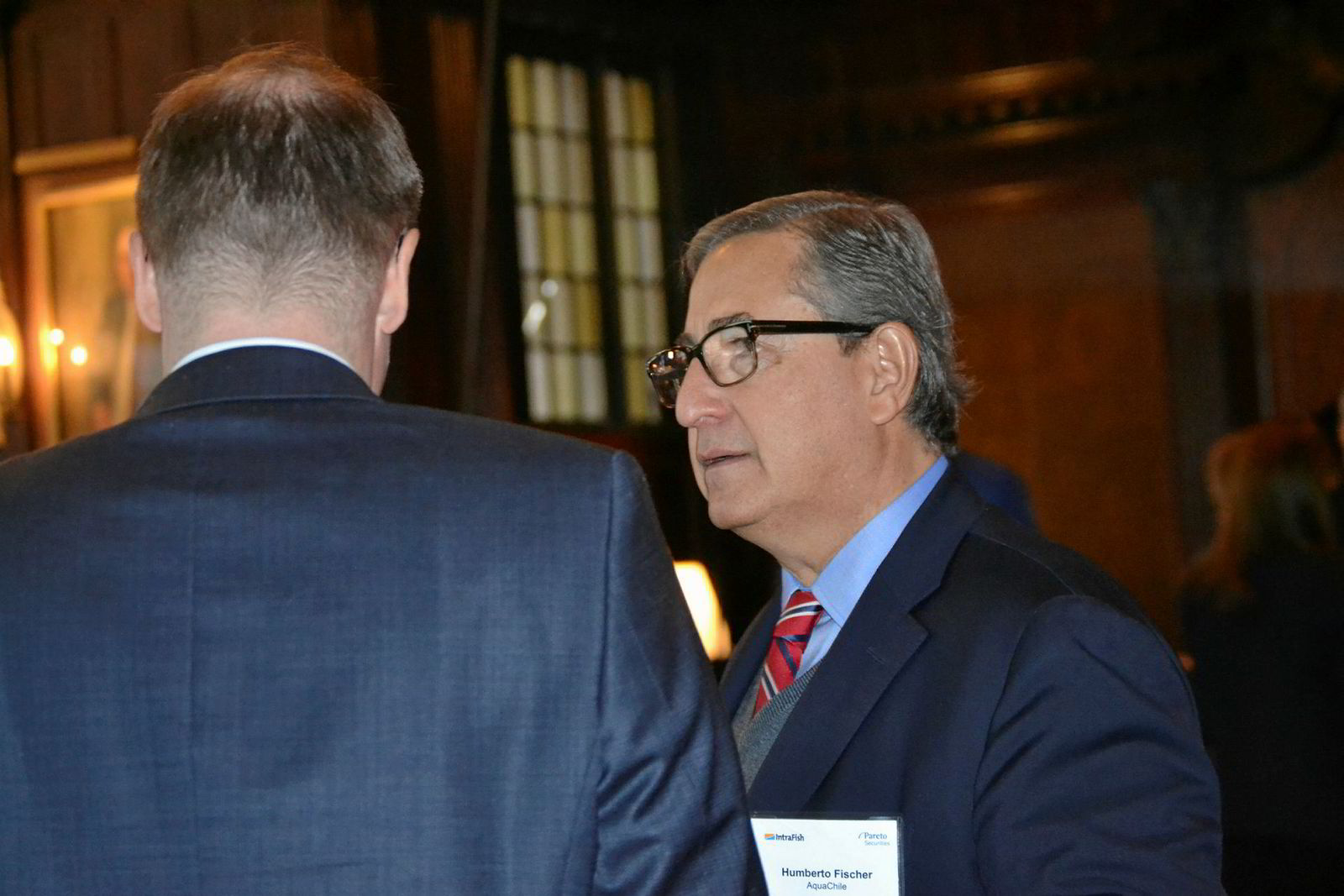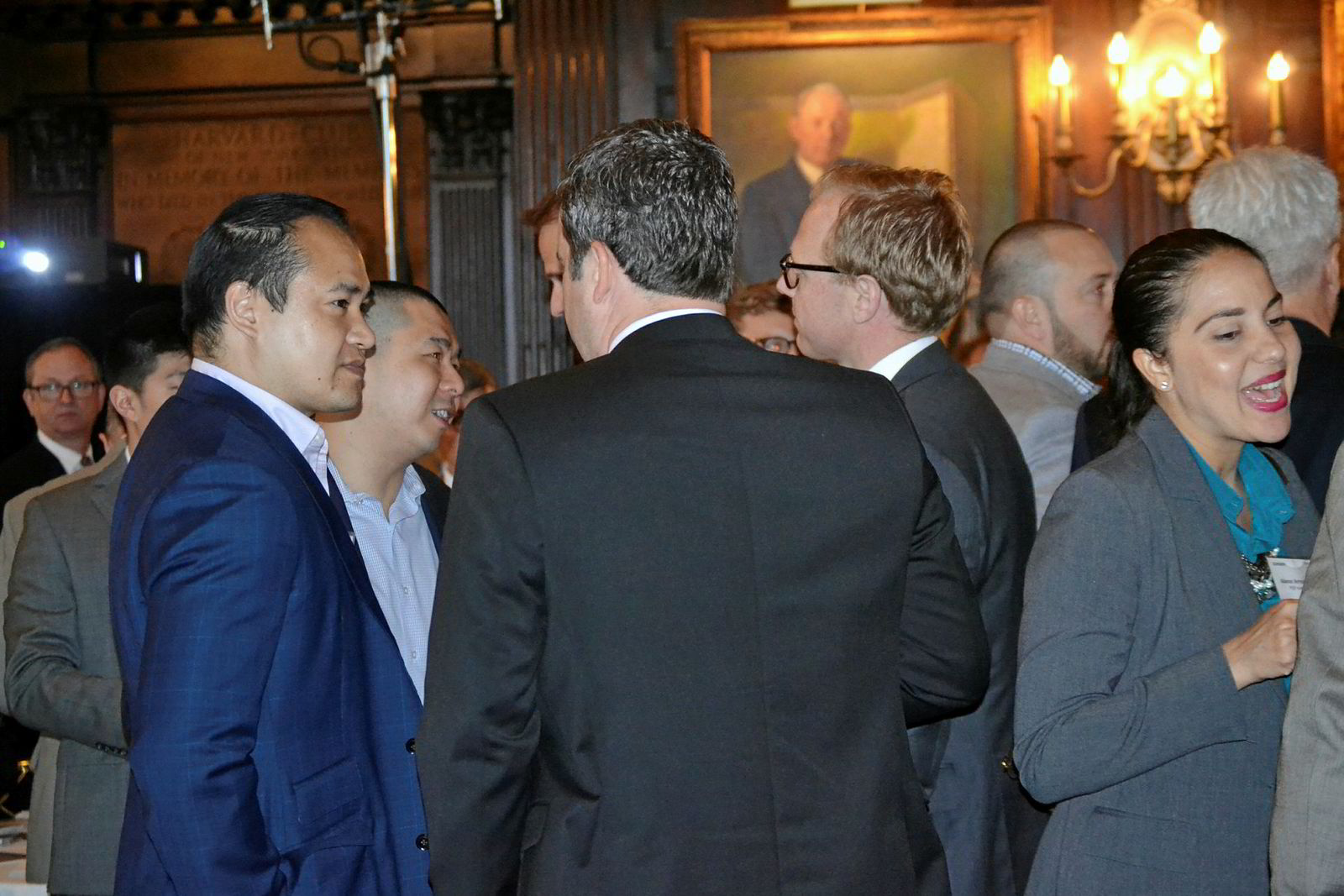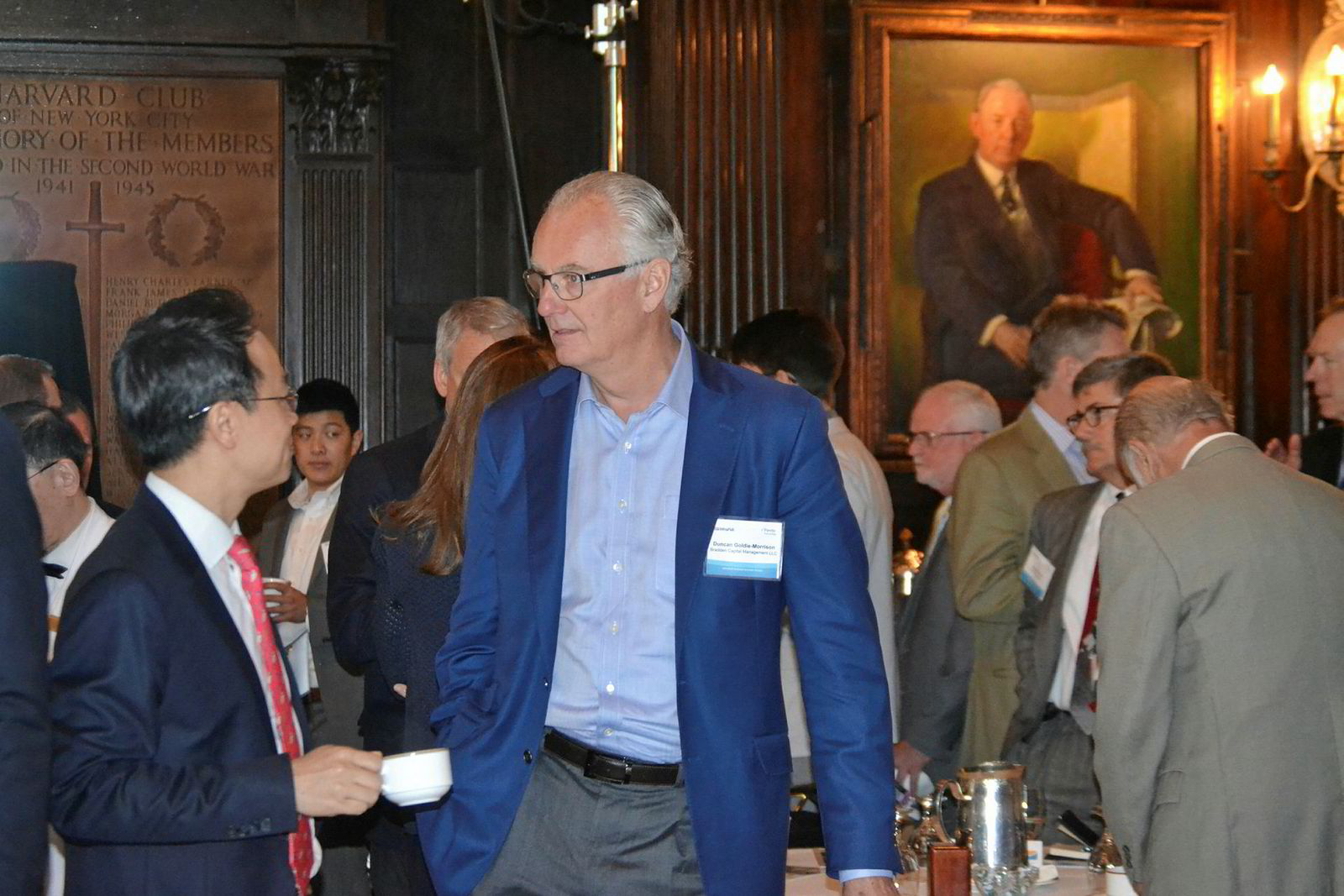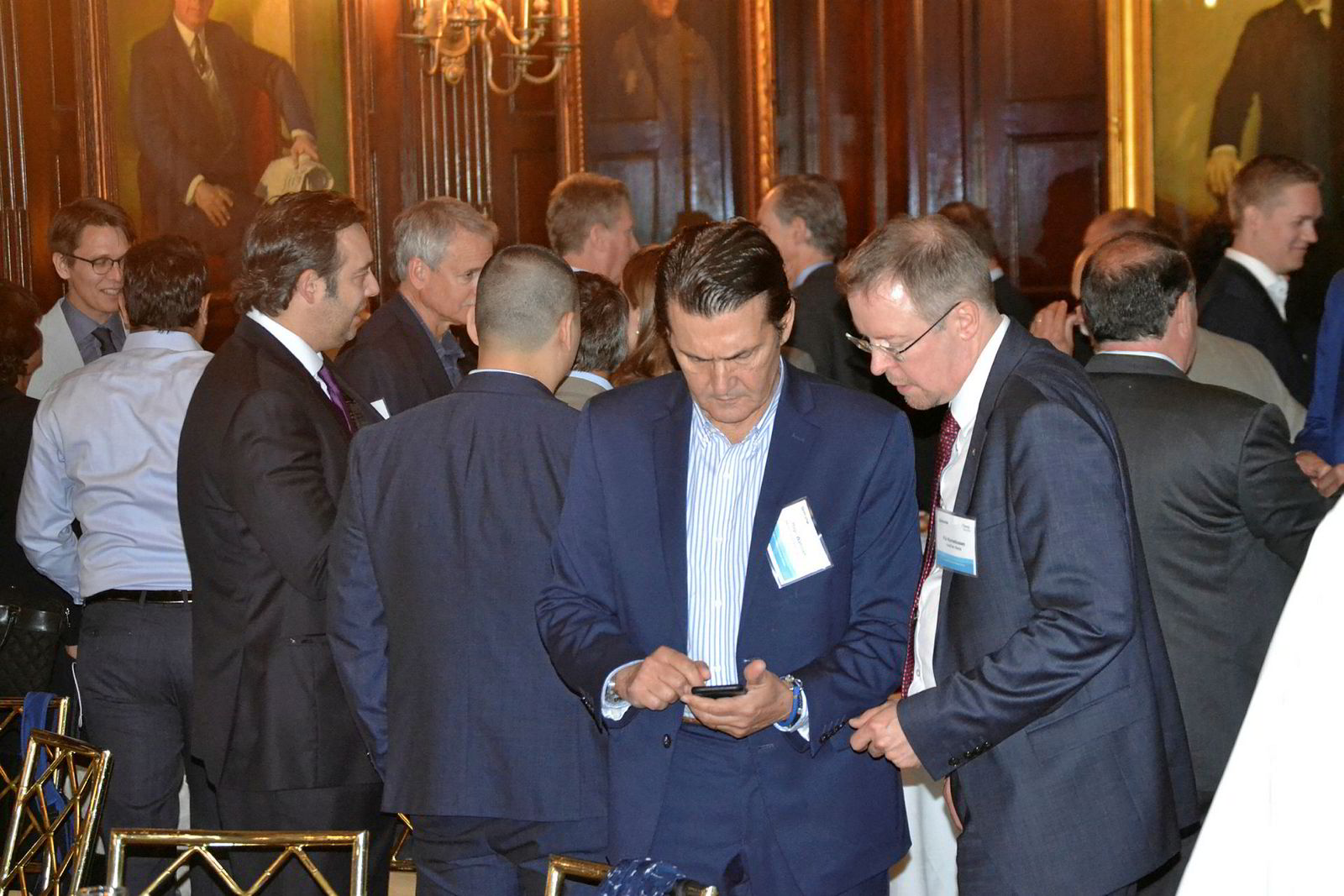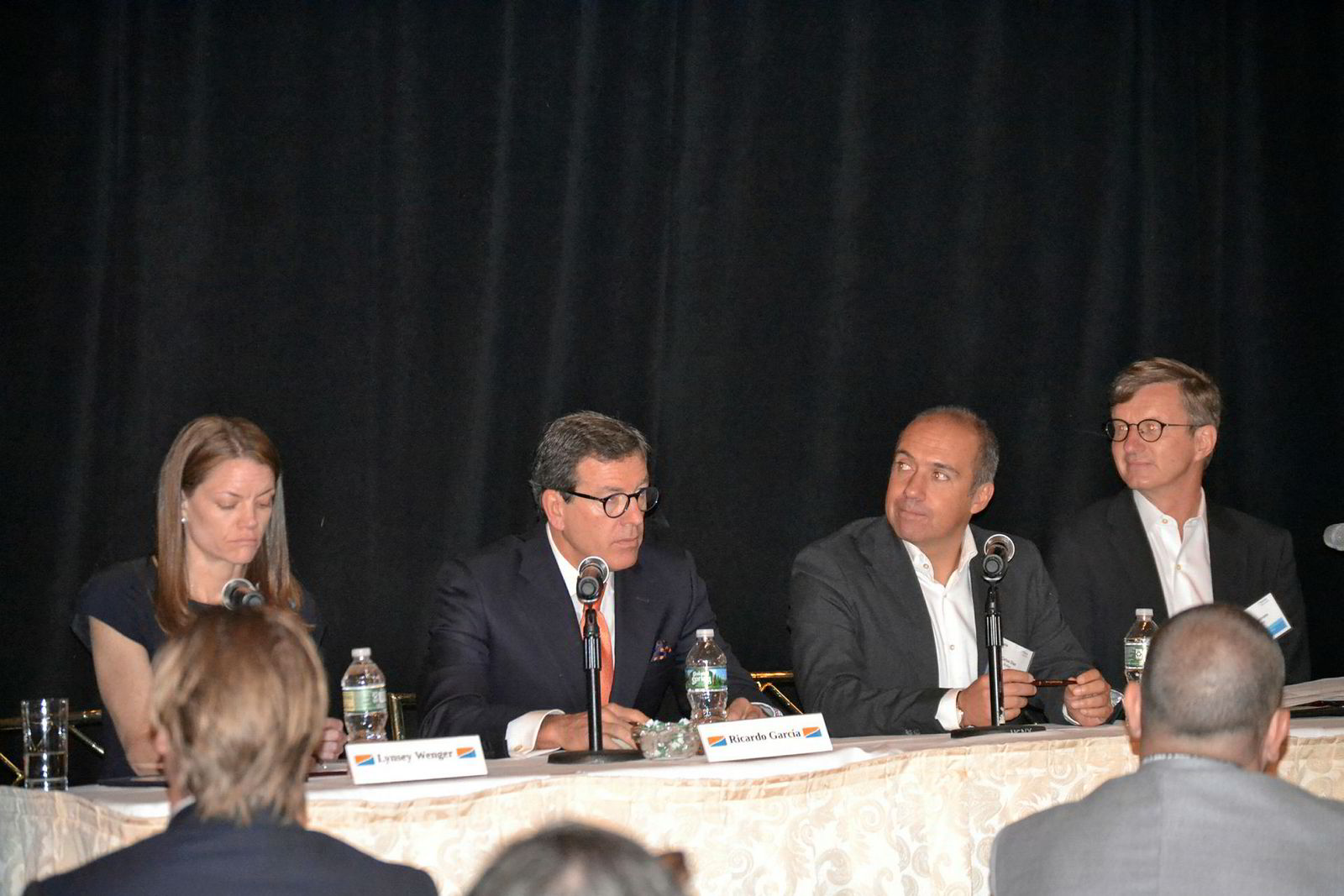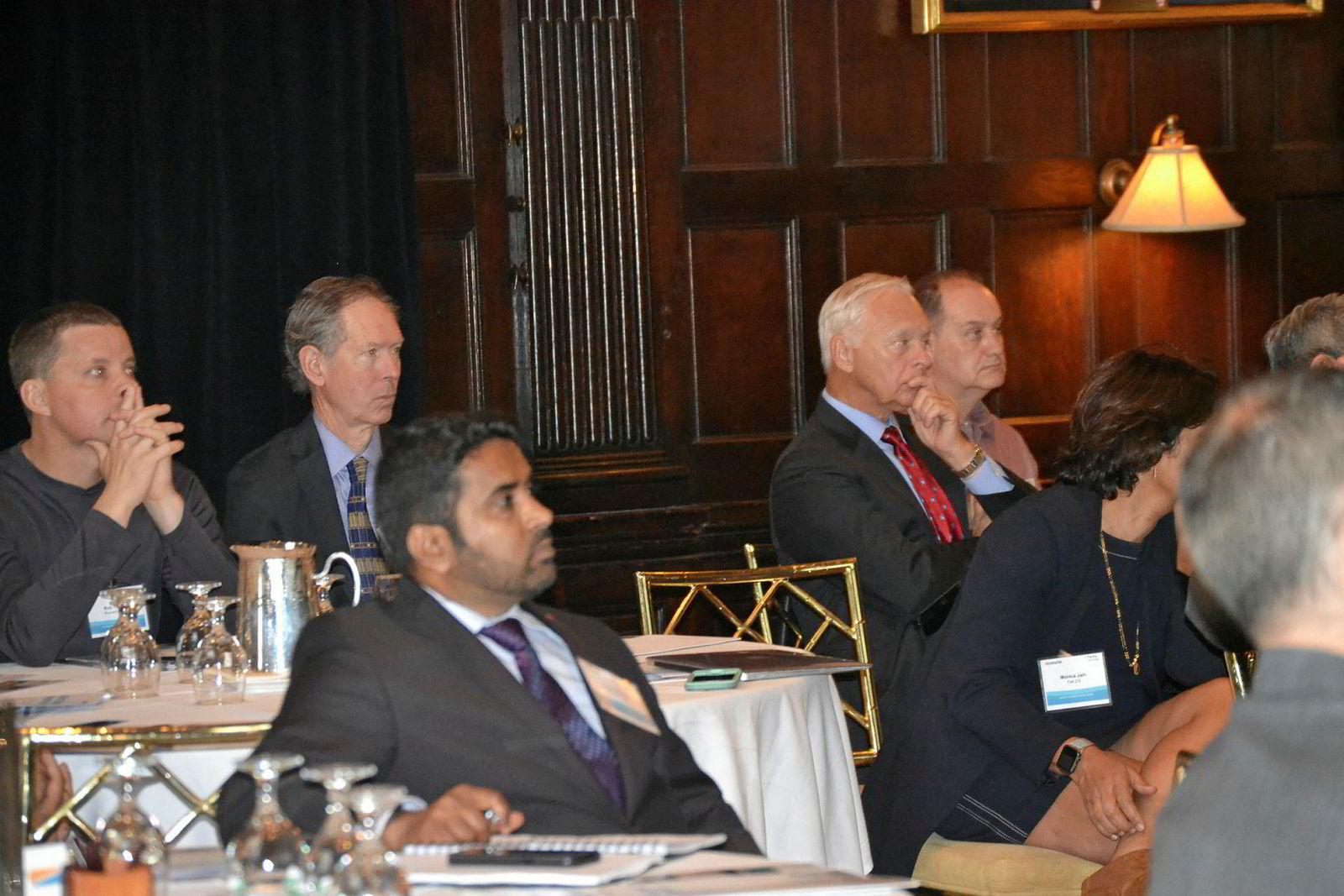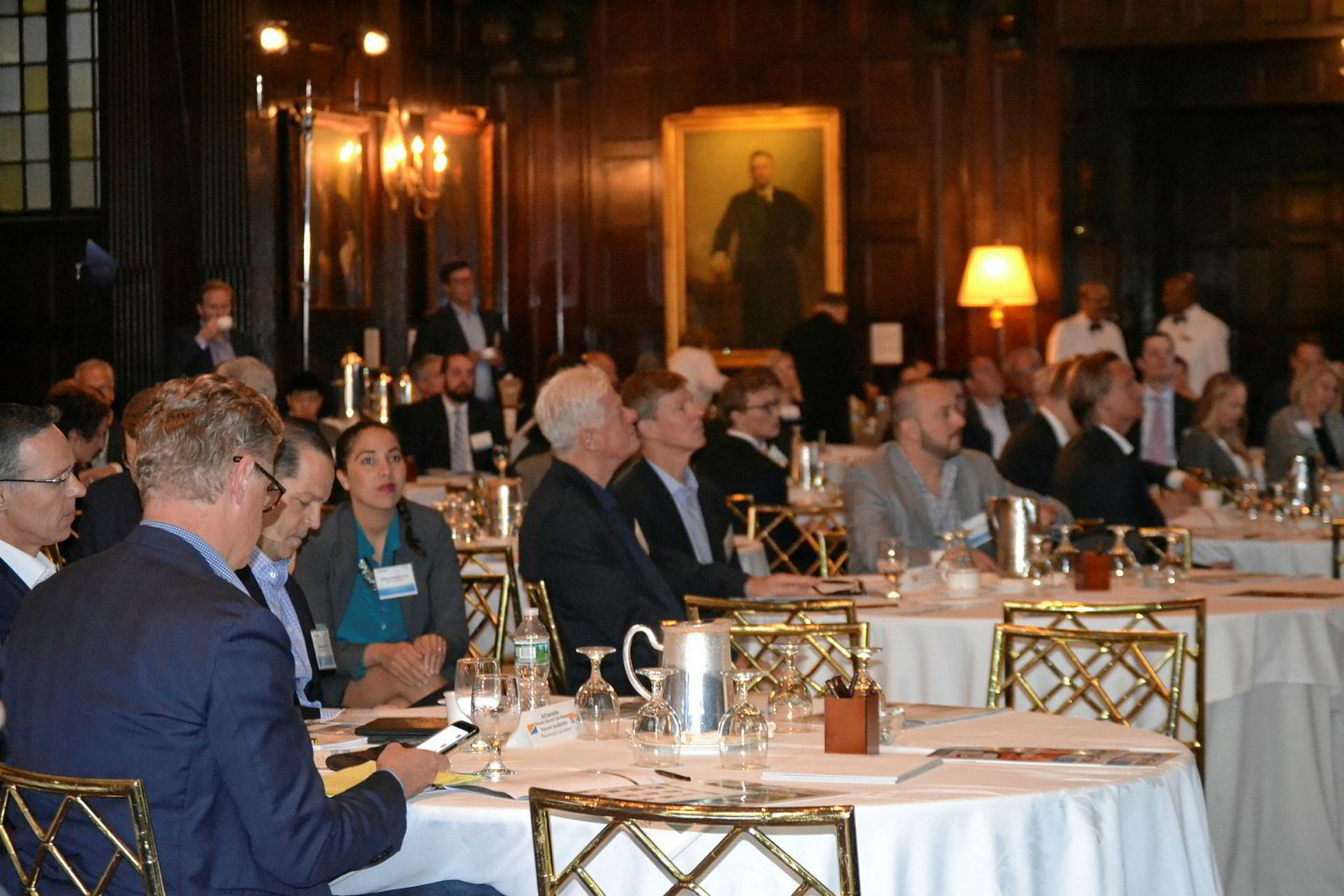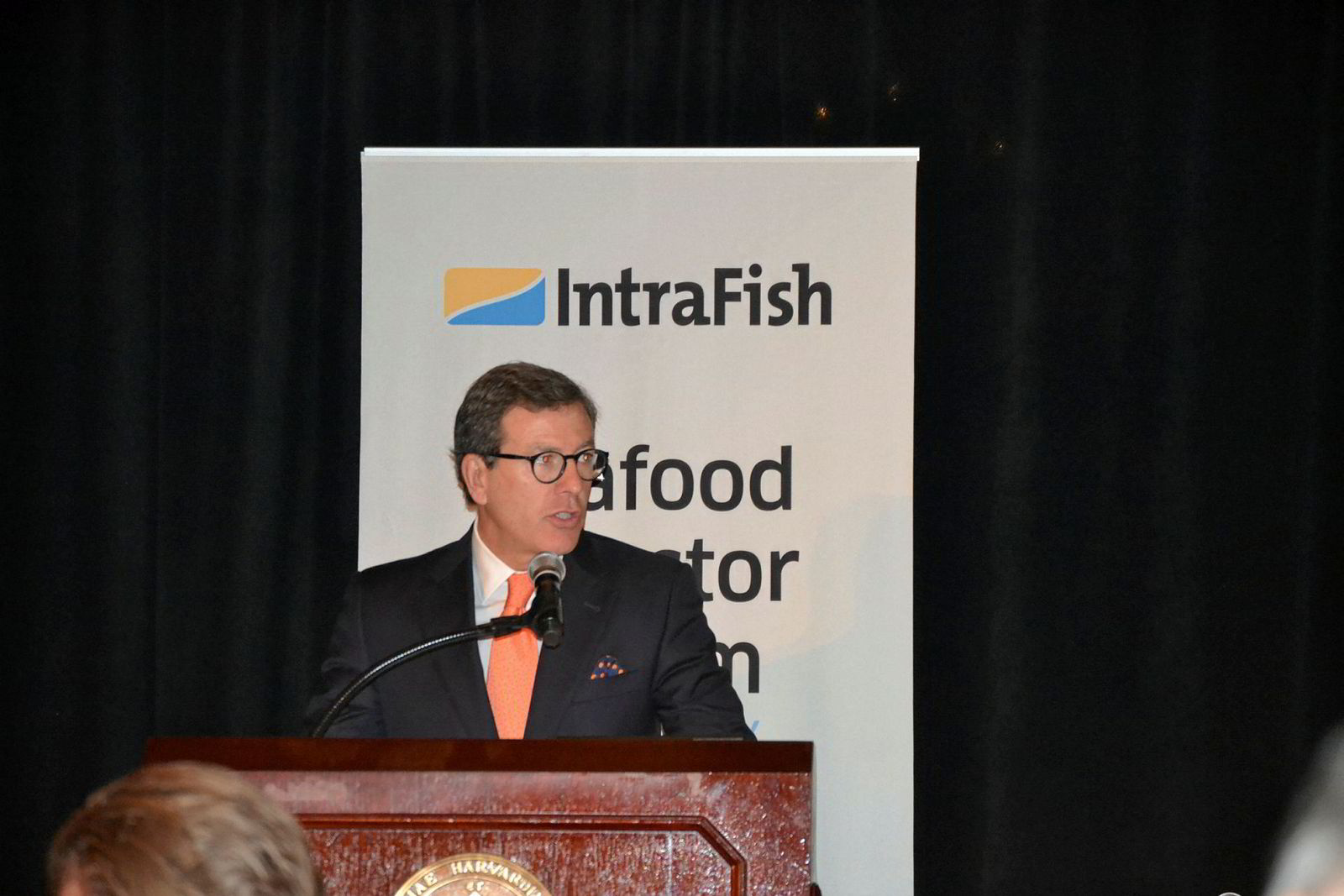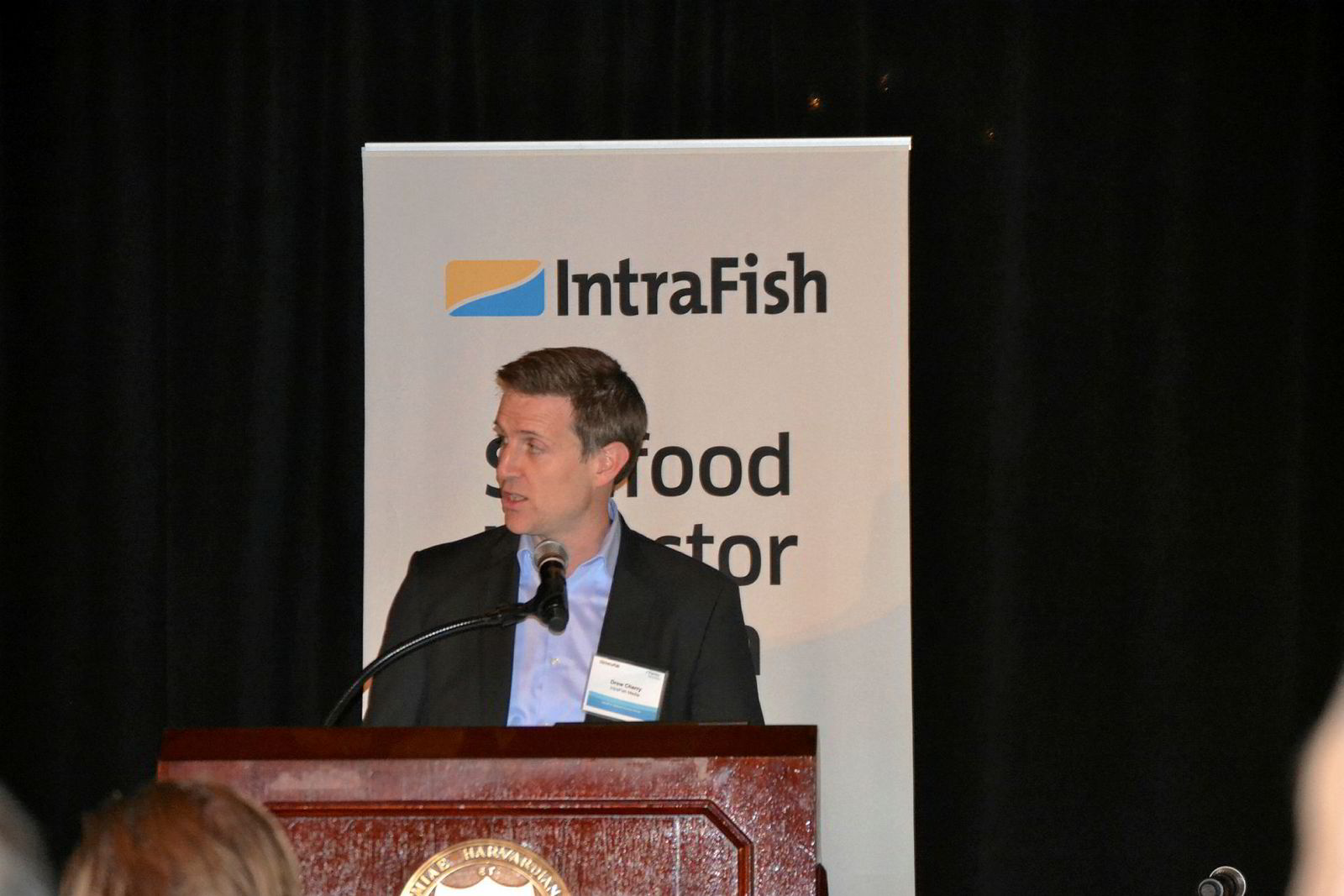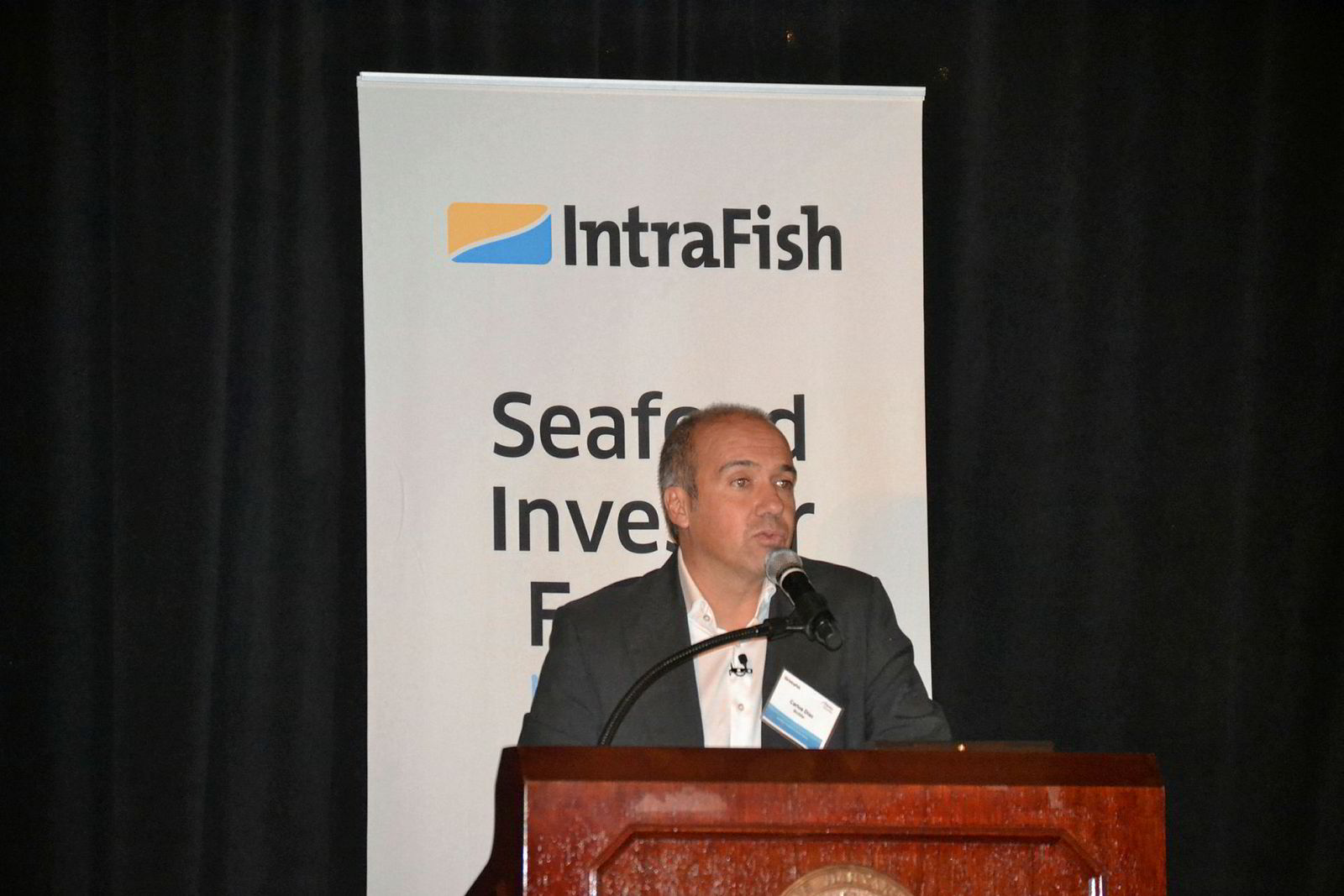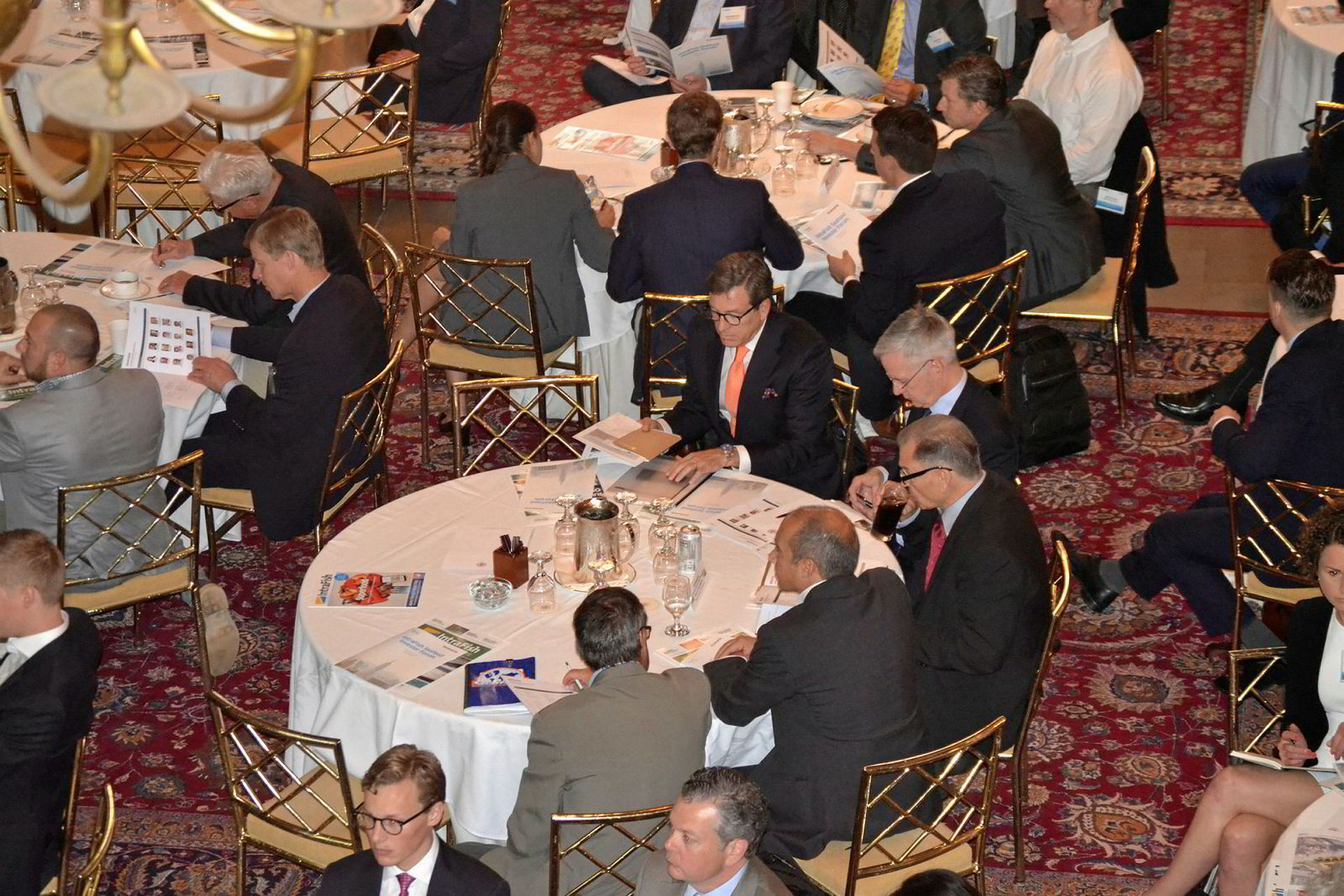Wednesday, May 23, 4:10 pm, EST
Slow and steady wins the race.
Broodstock Capital Partner Kjetil Haga said their company looks to invest in firms with a solid 7-year business model, not those that are constantly changing their dynamics or strategies to turn a profit quickly.
However, he added that the industry is hard to invest in because it seems to change fast.
Pareto Securities Parnter Kristoffer Jordheim said a company such as Cooke Aquaculture has the right strategy: diversify slow and steady. He pointed to Cooke branching out into other sectors, species, geographies and more.
"That strategy takes ambition and I don't know if there are many companies like that."
Former Blue Harvest CEO Jeff Davis brought up Cooke as well as Trident Seafoods as companies exhibiting long-term success.
"They're family-owned, private companies and because of this, they look long term with a wide lens. They're less worried about making money quarter after quarter," said Davis.
He added that public companies sometimes have greater risk as there's pressure to become successful overnight.
"Public companies are tied to the market and it's difficult because pieces move around quickly."
-- Kim Tran
-----
Wednesday, May 23, 3:45 pm, EST
Wild fishery investments offer returns
Much of the Seafood Investor Forum focused on investing in aquaculture operations and technologies,
But Jeff Davis, former CEO of Blue Harvest, reminded the audience that wild fisheries offer plenty of opportunity for good returns on investment.
"We feel if you can get into a fishery that has property rights, the long-term value of that fishery will grow. If you can get into a fishery that is well managed and sustainable that is a good investment," he said.
But don't dive in blind, he said. Each fishery is different and understanding the regulatory environment and volatility of wild sector is critical to making the right investment.
-- John Fiorillo
-----
Wednesday, May 23, 3:35 pm, EST
High prices don't dampen demand
Salmon company share prices are at record levels and salmon prices are at all-time highs.
Buyers can expect prices to soften by Q3 as greater production from Norway hits the markets, said Carl-Emil Johannessen, a seafood anyalyst with Pareto.
Demand growth is nearing 10 percent annually for salmon and this should keep prices firm, likely in the NOK60 per kilo, over the near term.
“People are eating more and more salmon at the higher prices, and we think this will continue,” Johannessen said, with the greatest growth coming in the US and China markets.
Production costs in Chile and Norway are coming down, a trend expected to continue, he said.
Salmon companies still see a lower valuation than other in other protein sectors because investors are a bit skeptical today’s high prices will continue.
-- John Fiorillo
-----
-----
Wednesday, May 23, 3:00 pm, EST
Stability and consolidation in Chile
Chile is seeing much more stability in its salmon farming industry these days, said Francisco Lepeley CFO AquaChile, but how will the country’s farmers extend the industry’s stability?
Adherence to new regulations has proven successful in moderating growth. Annual growth projections are between 3 percent and 6 percent for 2018-2020.
The industry has also launched the Chilean Salmon Marketing Council to promote the product in the US market. And efforts to build salmon consumption in Brazil are yielding positive results for Chile’s salmon producers. Now the industry must prepare for demand from China, said Lepeley.
The AquaChile CEO also said he expects further consolidation in the industry.
There are more than 20 salmon producing companies in Chile with more than 5,000 tons per year each, and the three largest Chilean producers control 30 percent of production, while in Norway the top 3 producers control 44 percent of production.
“Beyond pure growth, consolidation will produce economies of scale, more room to maneuver in the use of licenses, and more bargaining power in front of suppliers, who across several categories concentrate among the top 3 firms between 70 percent and 80 percent of the market,” he said.
-- John Fiorillo
-----
Wednesday, May 23, 2:45 pm, EST
Getting back to double digit growth?
Bakkafrost CEO Regin Jacobsen said the farmed salmon supply growth is stuck at around 5 percent.
He listed off options the industry should look at outside of conventional net pens, such as offshore technology, land-based farms, larger smolt sizes and more. However, he fears this may not be enough to match growing demand.
"I don't think all these ways will get us double digit growth, though."
-- Kim Tran
----
----
Wednesday, May 23, 12:25 pm, EST
Swaying consumers toward GE food
Aquabounty CEO Ron Stotish feels the industry needs to properly inform consumers on genetically-engineered (GE) products as food security is becoming a growing challenge.
The public has accepted modified genetics in other areas such as the medical field, advancing health innovations, genetic alalysis among prospective parents, and so on.
"However, you apply that to food and consumers become philosophically and culturally opposed."
Despite this, Stotish feels there is an opportunity here.
"I think public acceptance is part of the future." There is more and more research on successful fish family breeding programs and work on genomes to improve disease resistance, quality and growth rates.
"I think the public is beginning to realize that as they get more experience with these foods that it's a more complex story than they believe."
-- Kim Tran
----
Wednesday, May 23, 2:15 pm, EST
Sea lice solution?
How close are we to solving the sea lice problem that is costing farmers millions and damaging the public perception of the aquaculture industry.
"I think we’re a lot closer than it seems," said Malcolm Pye, CEO Benchmark, which provides a wide array of fish health technology solutions.
"I think the opportunity with sea lice is going to be the combining of amazing technology coming through the system now," he said. The combination of vaccines and genetic work in breeding salmon could provide a new effective tool in the fight against sea lice.
The company is producing stock partially resistant to sea lice and each year the breeding program tightens and improves the level of resistance, he said.
Pye said he is in favor of investors investing on both sides -- technology that spurs salmon production and the companies that supply and sell salmon around the world.
Aquaculture growth, particularly salmon, is being driven by a wave of consumer demand for healthy food.
The advantage of investing on the technology side is you have the chance to invest in intellectual property technology that is protected and technology can provide high margin returns.
-- John Fiorillo
-----
-----
Wednesday, May 23, 1:00 pm, EST
Outside of salmon
Salmon accounts for 90 percent of Akva’s business but salmon aquaculture is just 4 percent of the global aquaculture sector’s production, so the technology company is looking to expand its reach, said Simon Martinsen CFO of Akva.
Opportunities outside of salmon the company is focusing on include the Mediterranean --Turkey, Spain and Greece.
-- John Fiorillo
------
Wednesday, May 23, 12:35pm, EST
The cost of disease
Malcom Pye, CEO Benchmark, a leading aquaculture technology company that supplies health, genetics and advanced nutrition technologies put the impact of disease in aquaculture into perspective.
- Sea lice estimated annual cost to industry more than $500 million
- PD impact in Norway cost companies $250 million
- SRS estimated annual cost to industry $300 million
Wednesday, May 23, 12:15 pm, EST
Vertically integrated value
Vertically integrated salmon producer Bakkafrost is a good example of adding value to fish.
Starting with the company’s wild catch of 3,100 tons of blue whiting with a value of NOK 5 million (€527,178/$617,232), those fish are then converted into 750 tons of fishmeal and oil worth NOK 8 million (€843485/$987,571). From that will come 2,500 tons of feed with a value of NOK 23 million (€2.4 million/$2.8 million). The feed is used to grow 2,300 tons of salmon worth NOK 120 million (€12.7 million/$14.8 million), which will yield 2,100 tons of finished salmon products worth NOK 155 million (€16.3 million/$19.1 million).
-- John Fiorillo
------
------
Wednesday, May 23, 11:35 am, EST
Bakkafrost's market shifts
Salmon producer Bakkafrost has been working to expand its sales beyond its traditional markets.
For example, 86 percent of its sales came from continental Europe in 2002. By 2017, 15 percent of sales came from continental Europe, said Regin Jacobsen, CEO Bakkafrost.
Sales to Eastern Europe and Asia increased, and sales to EU and United States decreased in Q1 2018, compared with Q1 2017.
The EU market decreased from 46 percent in Q1 2017 to 31 percent in Q1 2018, while US market sales decreased from 19 percent in Q1 2017 to 16 percent in Q1 2018
Sales to Asia meanwhile increased from 13 percent to 21 percent over the same period and Eastern Europe increased from 22 percent to 32 percent.
-- John Fiorillo
-----
Wednesday, May 23, 11:35 am, EST
Aquaculture in Minnesota
Plans are moving ahead for the new East Phillips Urban Farm and Housing Project in south Minneapolis, Minnesota.
Ultimately the 400,000 square foot development area will contain a mixture of commercial and residential – and RAS aquaculture farms.
The Urban Farm Project, which has been growing yellow perch in the Minneapolis area, is planning on moving into a 45,000 square foot space in the new complex. They will be joined by Blue Water Aquaculture, which is planning to build a 48,000 square foot walleye RAS farm.
Chad Hebert of the Urban Farm Project said his company has been producing 5,000 pounds of yellow perch annually. However, the building that housed its facility was sold, forcing the company to look for a new facility, which brought Hebert to the East Phillips Urban Farm and Housing Project.
The new facility, when done, will allow Hebert to produce up to 20,000 pounds annually. The walleye facility is projecting production of 2 million pounds annually.
The yellow perch farm is expected to be up and running in 2019, while the walleye farm is expected to launch in 2020.
-- John Fiorillo
------
------
Wednesday, May 23, 11:20 am, EST
Brave new world for salmon farming
Atlantic Sapphire, developers of the closely watched land-based salmon farm under development in Miami, is hoping to be harvesting fish two years from now, Jose Prado, CFO of the company told attendees at the IntraFish Seafood Investor Forum.9
The facility has an ultimate capacity of 90,000 tons, but the first phase is projected to produce 10,000 tons, he said. Phase two will add an additional 20,000 tons.
Growing the fish to between 4 and 5 kilos with perfect flavor is “old news," he said. The company has achieved this at its facility in Denmark. The goal now is to repeat this production over and over again consistently.
The company forecasts a NOK36 ($4.45/€3.79) per kilo production cost for its salmon, which includes lower costs for shipping and disease treatments and builds in higher technology and associated development costs.
-- John Fiorillo
-------
-------
Wednesday, May 23, 10:15 am, EST
The role of alternative feed ingredients
Alternative feed ingredient suppliers are emerging as a new force in the future of sustainable aquaculture.
ADM wants to take a larger role in aquaculture because of the industry’s rapid expansion, said Peter Bergstrom, International Business Manager, ADM Animal Nutrition, during The Future of Fish Feed panel at the IntraFish Seafood Investor Forum.
For feed producers to actually change the supply chain you have to have commercially viable volumes of alternative feed available for aquaculture firms, said Lynsey Wenger, CFO of Calysta, which counts Cargill as an investor.
Enrico Bachis Market Research IFFO reminded attendees that alternative feed ingredients should not be considered replacements for traditional fish meal and oil, but a complement to traditional feed products.
The most promising alternative feed are single cell products where you can design a product that has the qualities needed, said Biomar’s Carlos Diaz.
-- John Fiorillo
-------
Wednesday, May 23, 10:09 am, EST
Fixing the fish feed problem
Salmones Camanchaca CEO Ricardo Garcia said we need to look at the other end of the supply chain to tackle the issue of fish feed substitutions.
"The world wants another Chile in five years in terms of salmon production. That's what the consumer wants at the current price." That's about an additional 600 metric tons in the next 5-6 years.
"This isn't about whether we put fish meal or fish oil inside feed," said Garcia, adding that the industry needs help from feed producers and researchers to find a feed balance that would grow fish at a faster rate, reduce environmental impact and increase omega 3 levels in the fish flesh or muscle.
However, as more options emerge for fish feed and fish oil substitutions, Garcia raised concerns that he's noticed higher levels of omega 6 as a result.
Research shows omega 6 is pro-inflammatory, whereas omega 3 is anti-inflammatory for consumers as well as the fish, said Garcia.
He urged researchers find a solution to this issue while addressing other challenges such as faster fish growth.
-- Kim Tran
-------
Wednesday, May 23, 10:02 am, EST
Why invest in Salmones Camanchaca?
Ricardo Garcia, Salmones Camanchaca CEO, made a strong case for investors.
"We have a strong growth plan for the next 3 years," he said. As for liquidity on the Oslo Stock Exchange, Salmones Camanchaca is on about the same page as other Norwegian companies when looking at the turnover of float shares from Feb. 5 - April 12.
However, the company has a much higher liquidity compared with other Chilean salmon companies.
Among only Chilean salmon companies on the Oslo Stock Exchange, Salmones Camanchaca accounted for 85 percent of the $68 million shares traded in that same time period.
Garcia said they have two goals going forward: having a FIFO ratio at 1 or below 1 and have the same amount of omega 3 in its salmon as wild salmon.
-- Kim Tran
-------
-------
Wednesday, May 23, 9:55 am, EST
Stability and emerging markets drive Chile
Chile’s salmon farming industry is enjoying a nice stretch of sustainability and strong prices, Ricardo Garcia, CEO of Salmones Camanchaca, told attendees at the 2018 IntraFish Seafood Investor Forum.
The industry is seeing more stability in the environment, employment, production and growth in profits, he said
“The last two years the Chilean government has introduced regulations and refinement to institutions. Today, the result is that the regulations are bringing stability to stocking and, therefore, future growth. The regulations will allow 3 percent of growth going forward.”
Salmon prices in US market are growing 3 percent in real terms annually, he said, because of growing demand and emerging markets. The United States used to account for 55 percent of Camanchaca’s sales but last quarter that percentage was just 32 percent because emerging markets are taking the fish out of the US market.
-- John Fiorillo
-------
Wednesday, May 23, 9:40 am, EST
The future of fish feed
The future of fish feed will depend on four factors, said Carlos Diaz, CEO of feed giant Biomar.
- Feed will continue to be an important factor to achieve growth potential in aquaculture;
- The feed industry must implement best practices globally, especially in the non-salmon world;
- Feed providers must be ready for RAS and off-shore aquaculture and their feed requirements; and
- Sustainable raw material base and transparency is a must.
-- John Fiorillo
-------
-------
Wednesday, May 23, 9:30 am, EST
Balanced diets for fish and the environment
The challenge for feed suppliers is to develop feeds that provide nutritional optimal balanced diets not only for fish but also for environment and systems, Carlos Diaz, CEO of feed giant Biomar, told attendees at the 2018 IntraFish Seafood Investor Forum at the Harvard Club in New York City on Wednesday.
Managing aquaculture of the future will require further focus on ensuring that feeds do not have any detrimental impact on the environment in which the farms operate.
-- John Fiorillo
-------
Wednesday, May 23, 7:00 am, EST
Seafood investors gather in NYC
The 2018 IntraFish Seafood Investor Forum NYC arrives in Manhattan today.
The event, brought to you in conjunction with Pareto Securities, brings together representatives from some of the largest private-equity and investment companies in the world.
In addition to networking opportunities, the speaker lineup provides a broad range of expert insight into the technology, nutrition and companies that will take the global seafood industry forward into a sustainable and financially lucrative future.
The annual meeting brings together the industry's most elite executives to discuss the opportunities for investment and growth in the global seafood, aquaculture and commercial harvesting industry.
This year's program includes: BioMar CEO Carlos Diaz; Salmones Camanchaca CEO Ricardo Garcia; Lynsey Wenger, CFO, Calysta; Peter Bergstrom, International Business Manager, ADM Animal Nutrition; Atlantic Sapphire CFO Jose Prado; Cooke Aquaculture CFO Peter Buck; Bakkafrost CEO Regin Jacobsen; Benchmark Holdings CEO Malcolm Pye; AKVA CFO Simon N. Martinsen; Ron Stotish, CEO, Aquabounty; AquaChile CFO Francisco Lepeley; Pareto Securities Seafood Analyst Carl-Emil Johannessen; Kristoffer Jordheim, Partner, Pareto Securities; Dawid Heyl, Analyst, Investec; Kjetil Haga, Partner, Broodstock Capital; and Thor Talseth, Portfolio Manager, Amerra Capital Management.
-- IntraFish Media
----------------------------------------------------
Use #SIF18 when posting to social media about the event.
